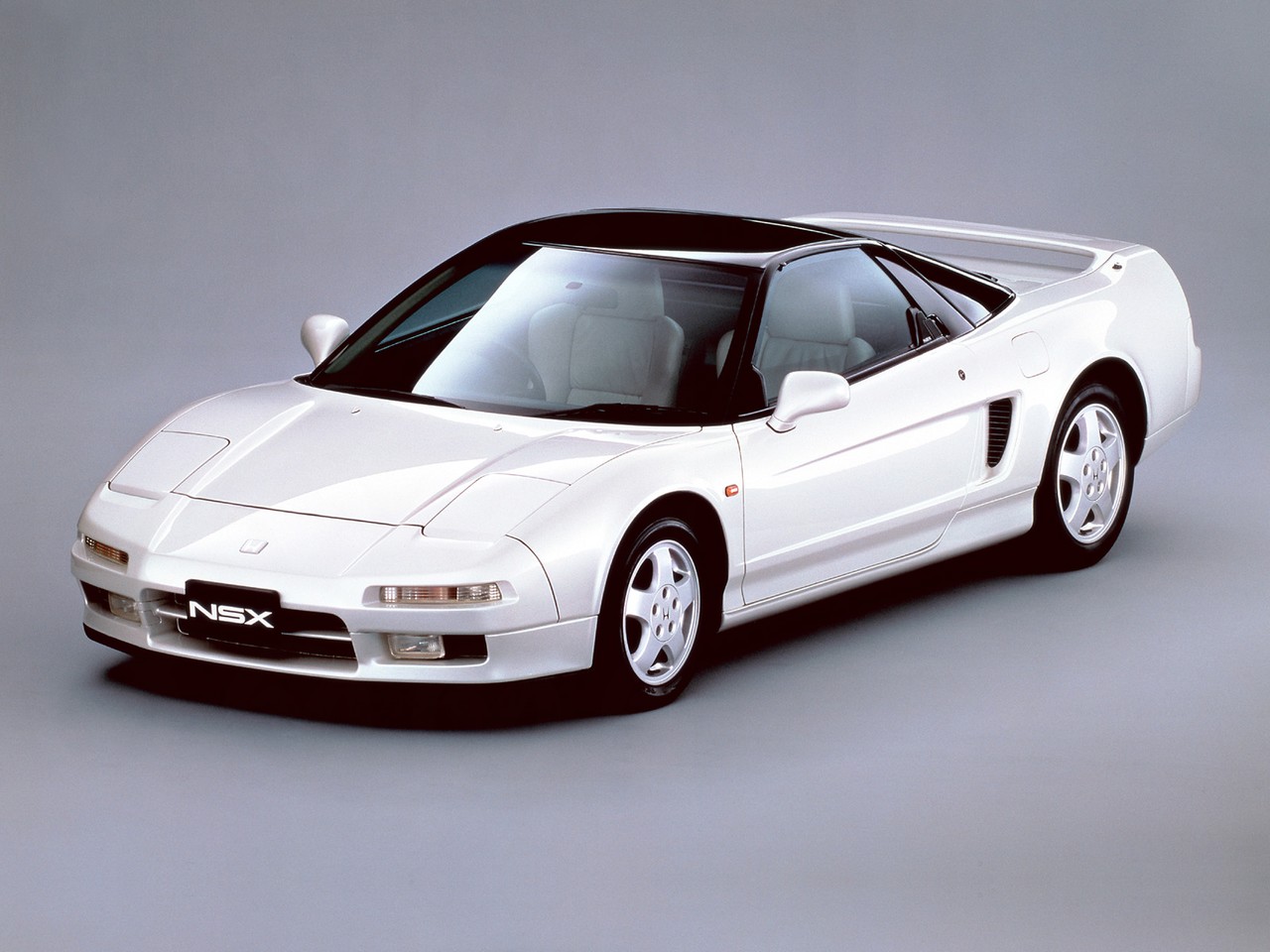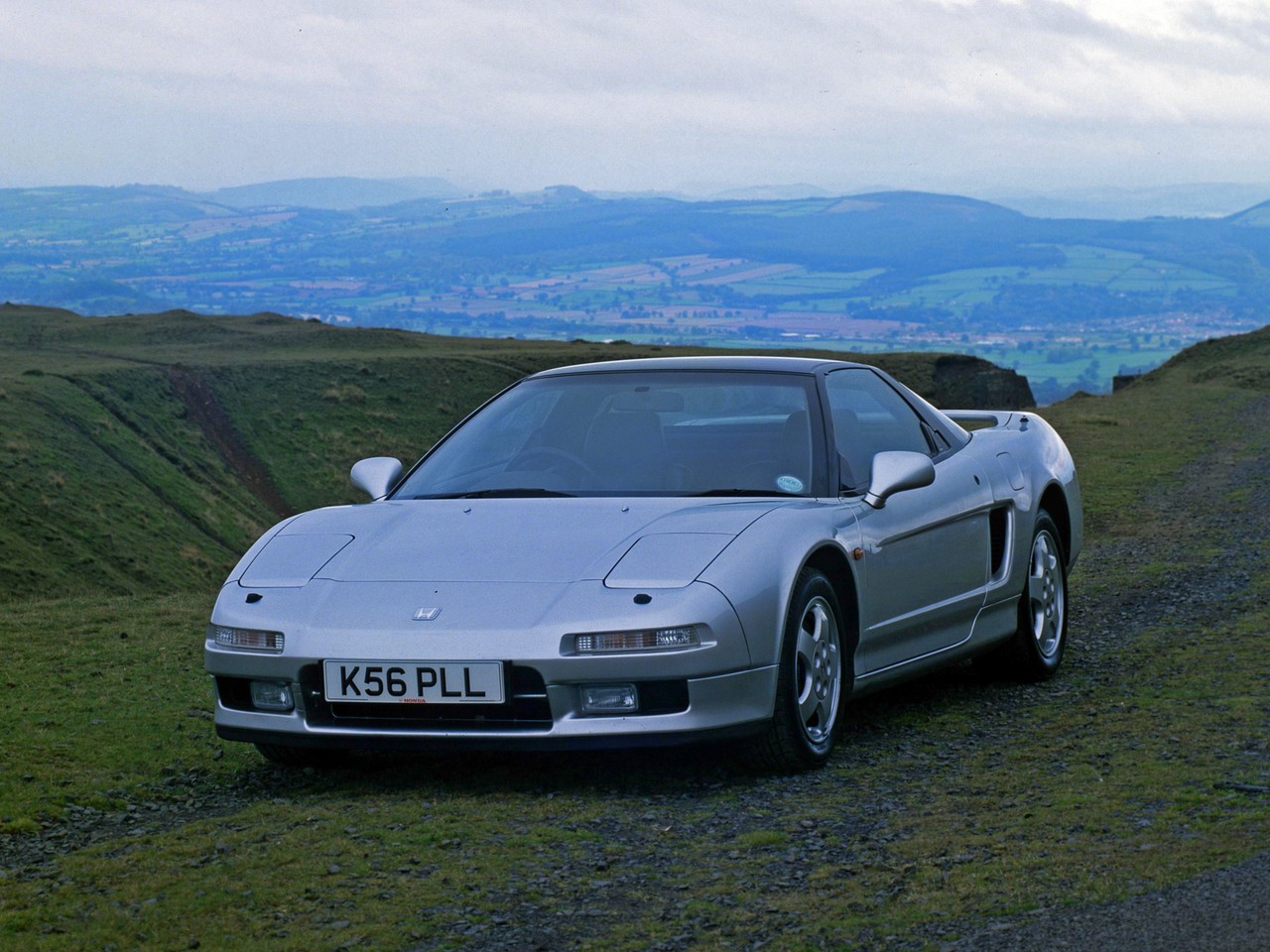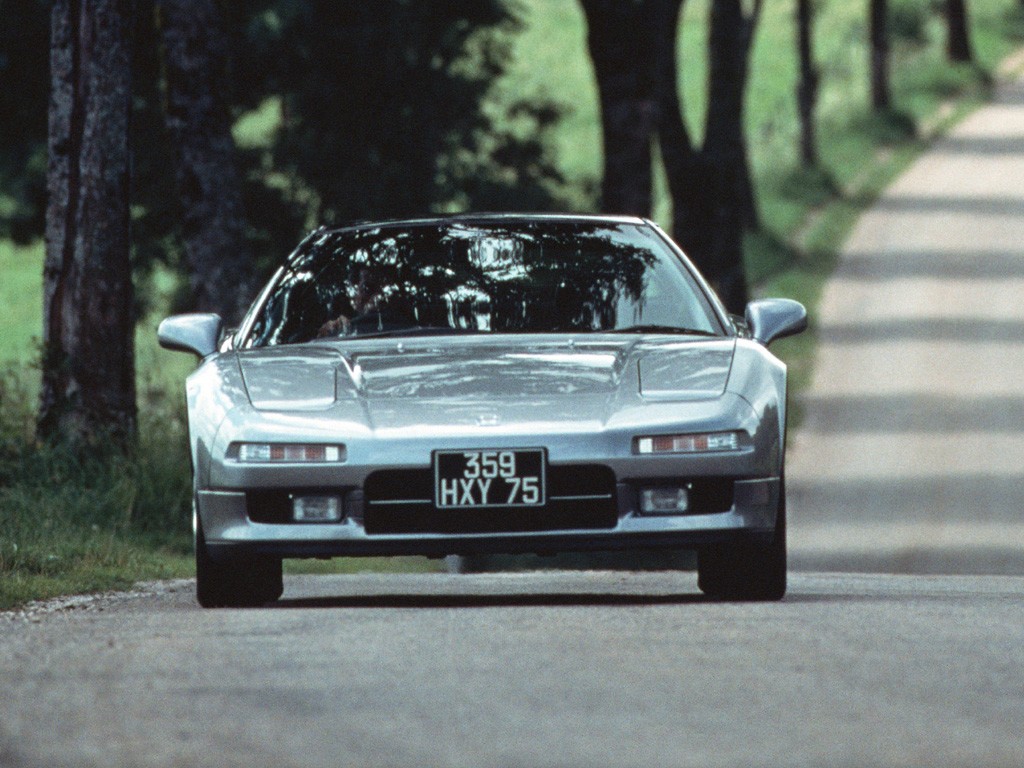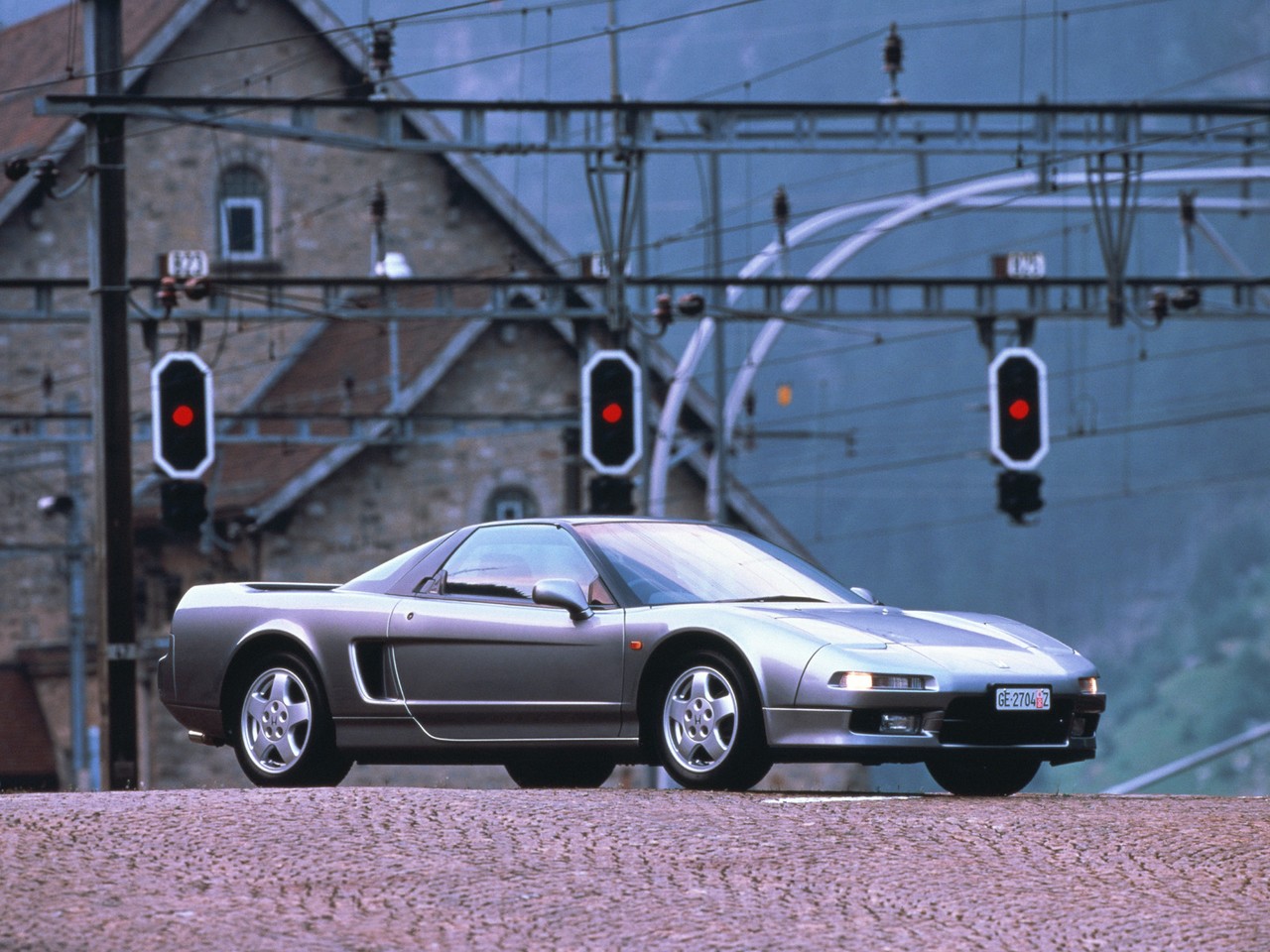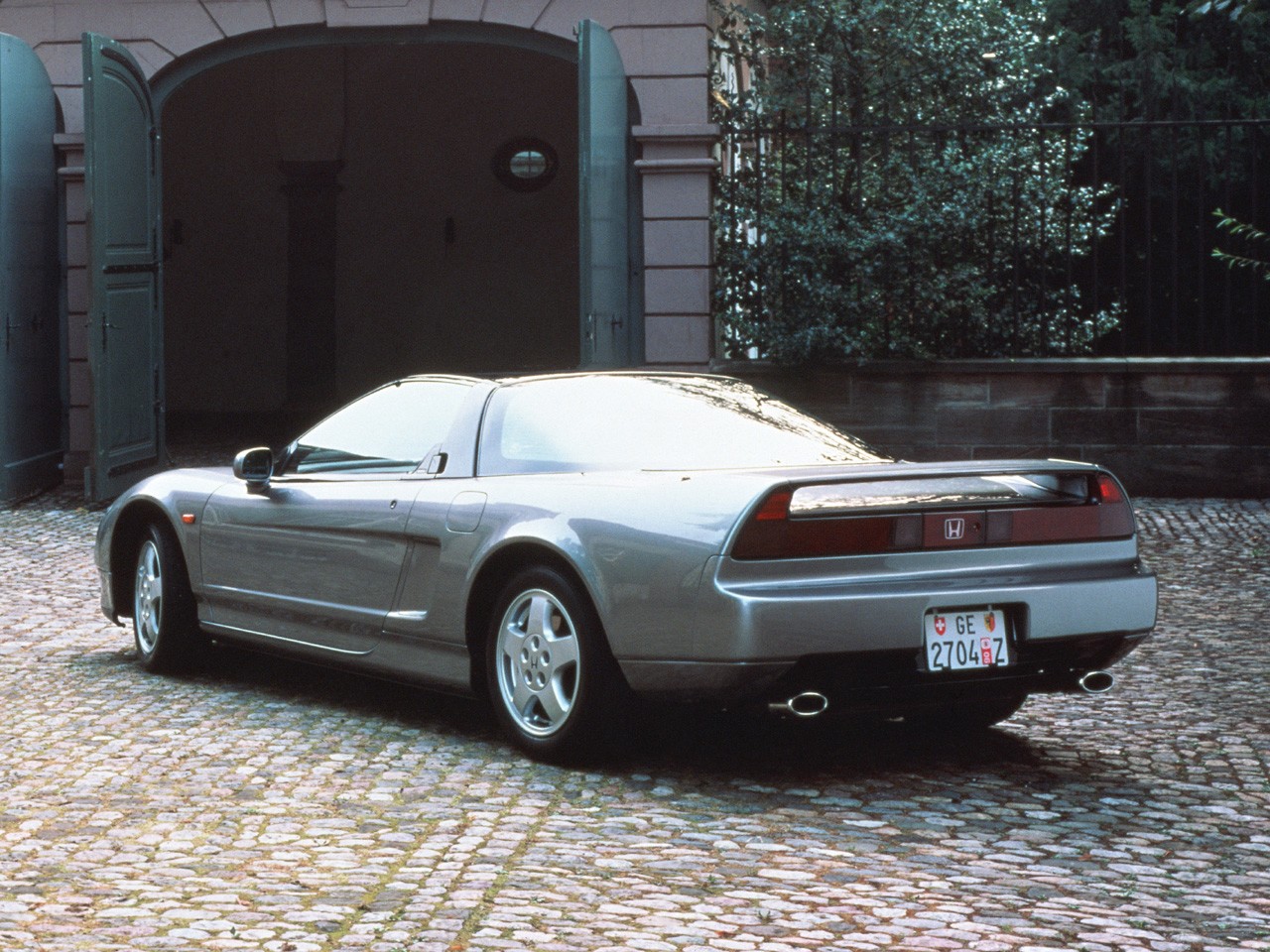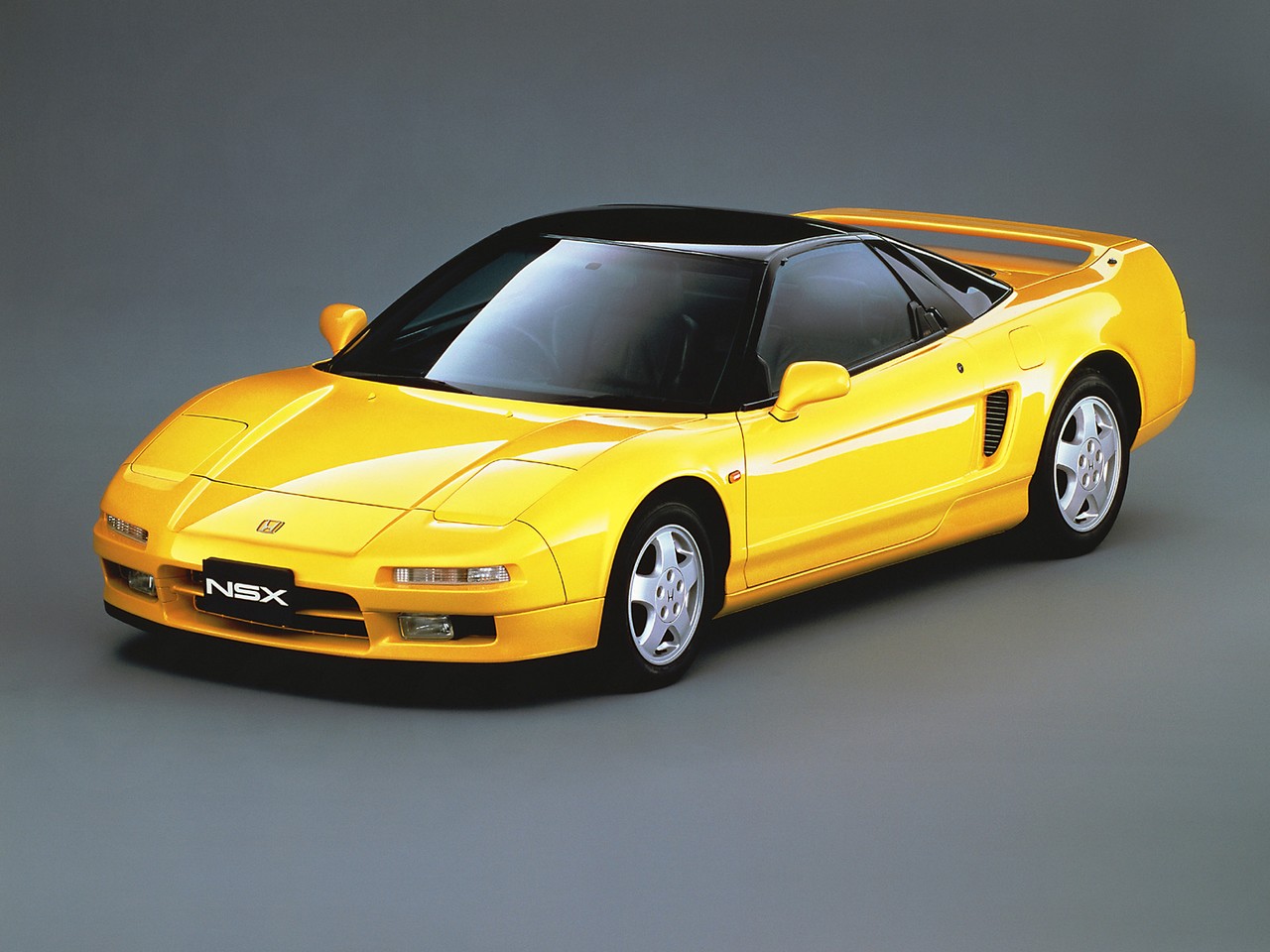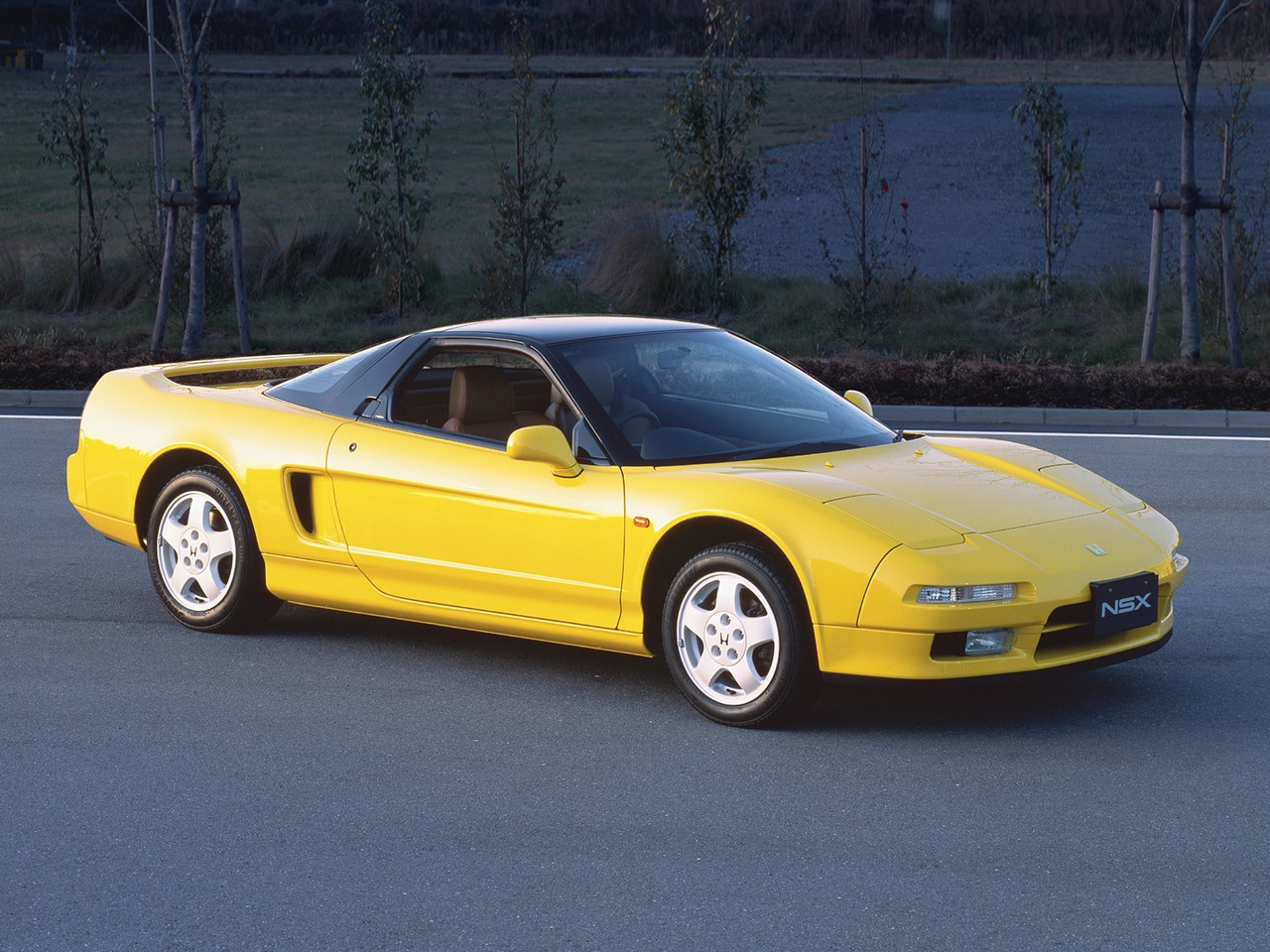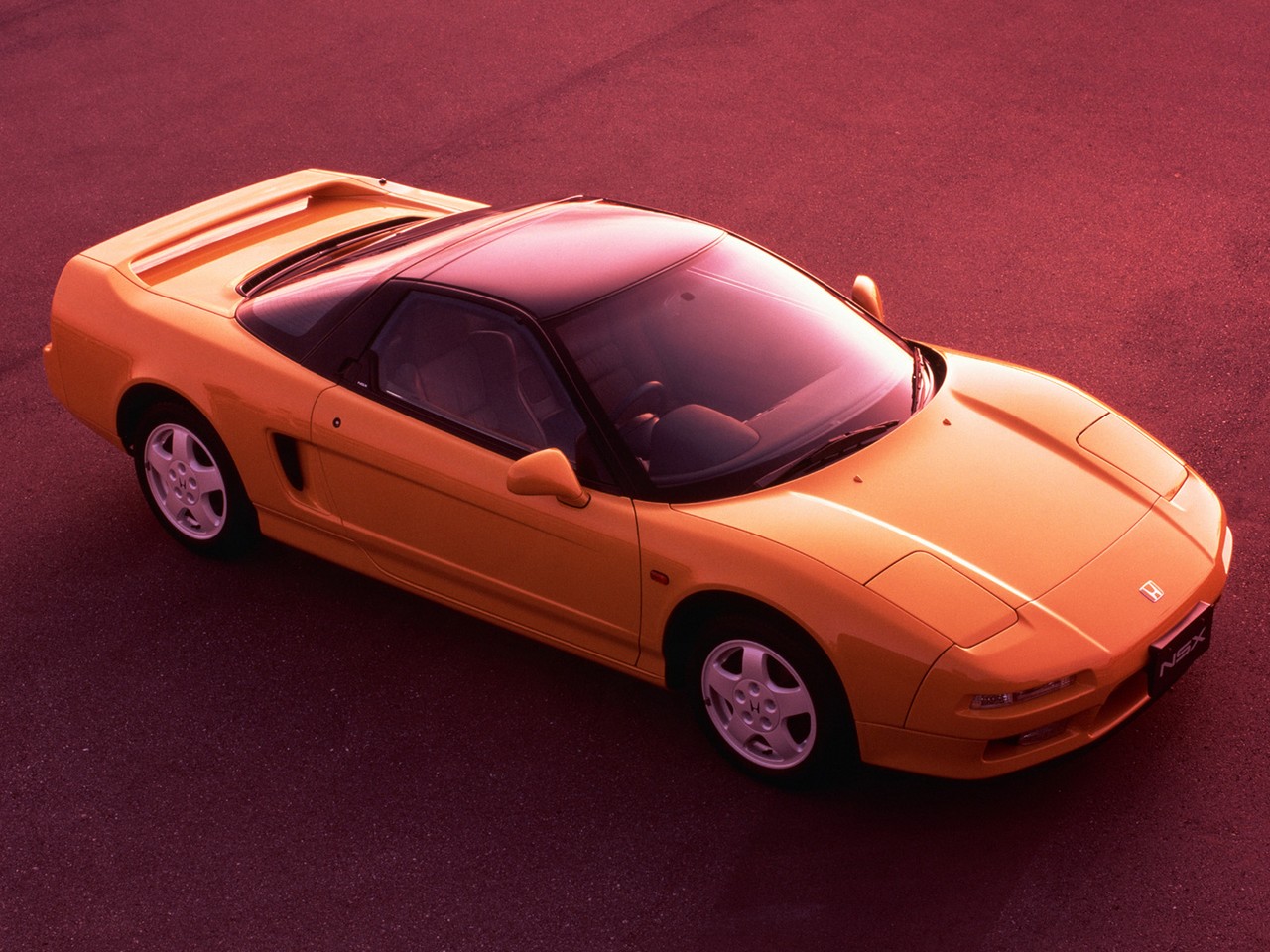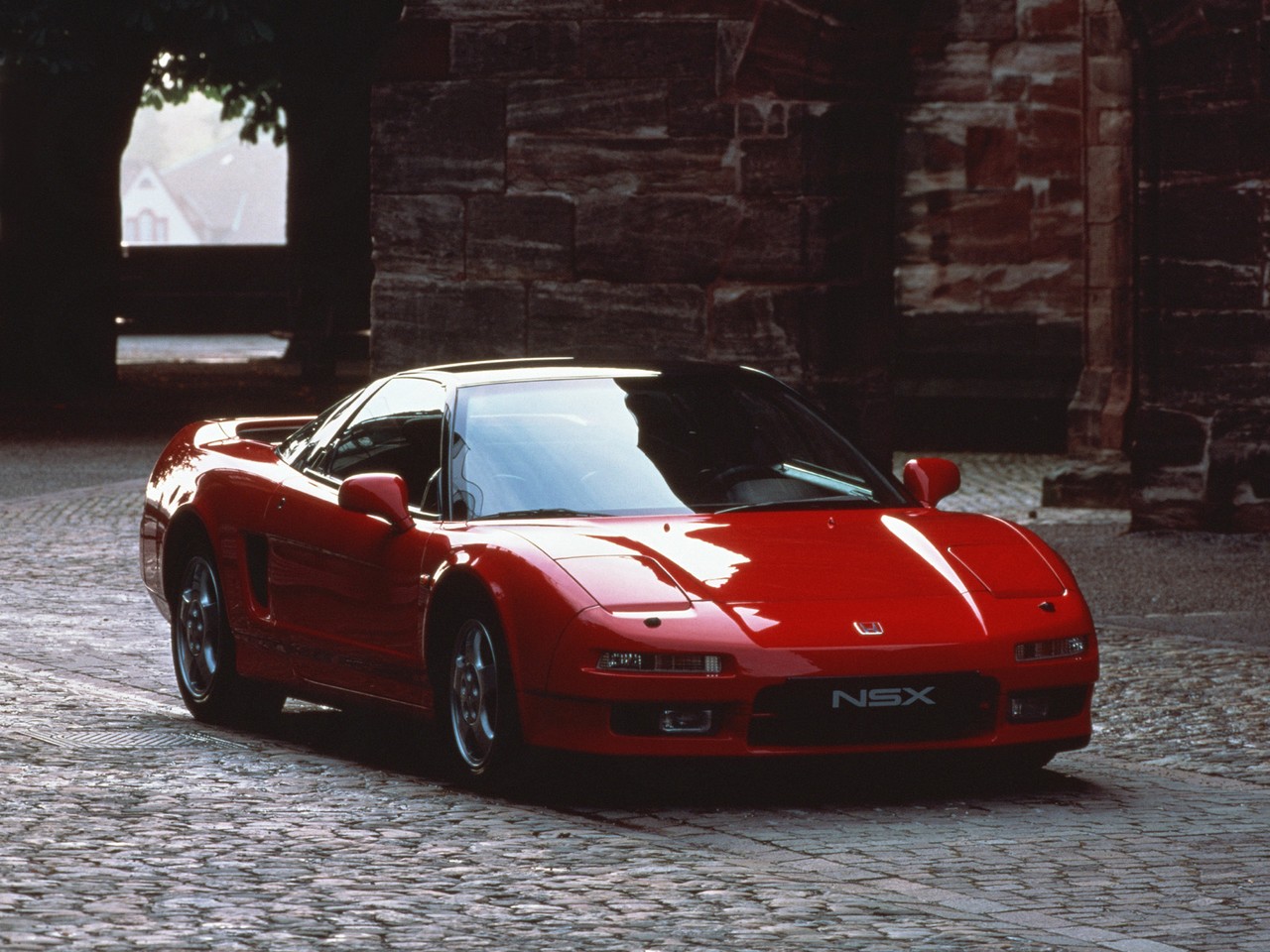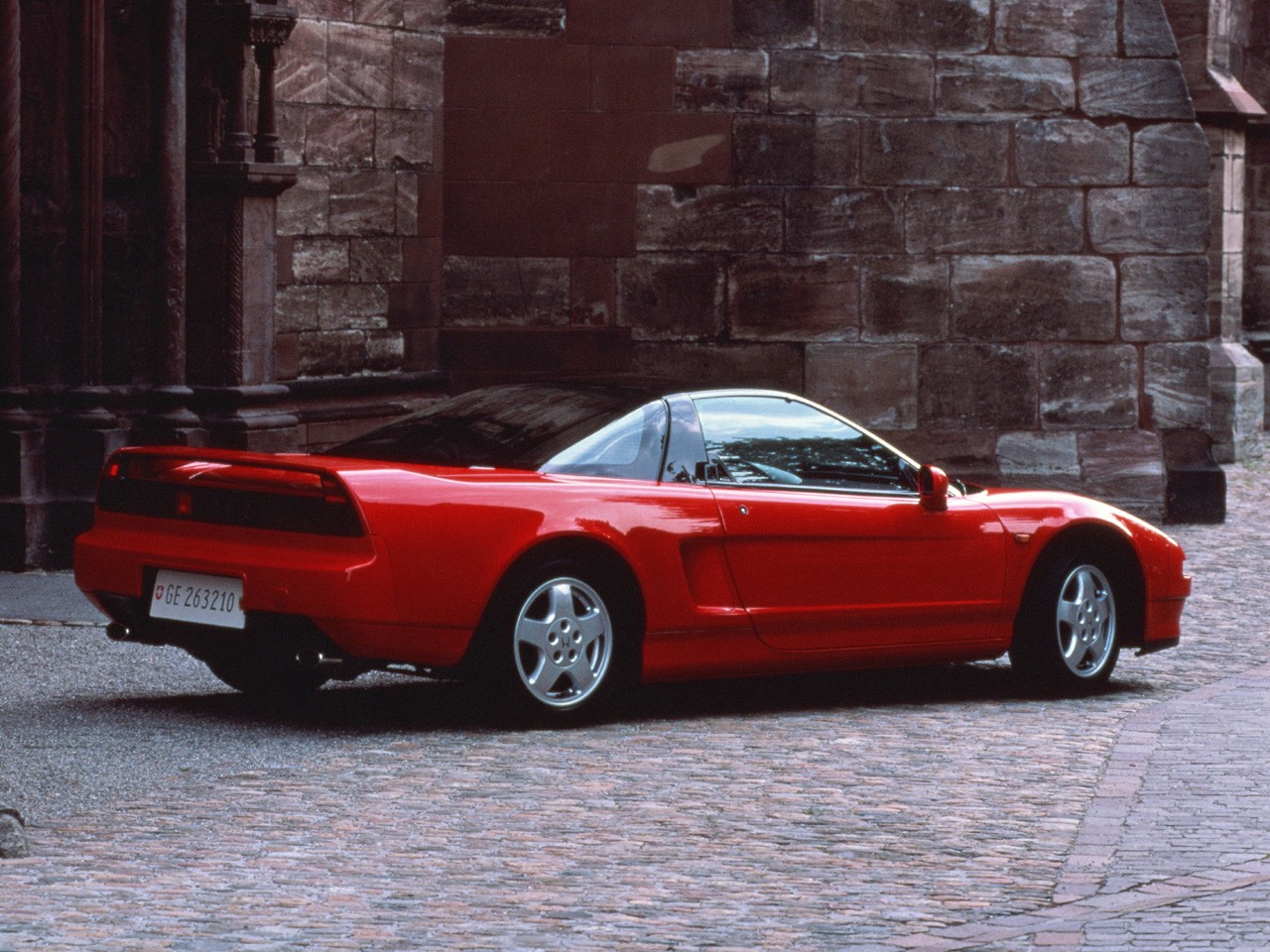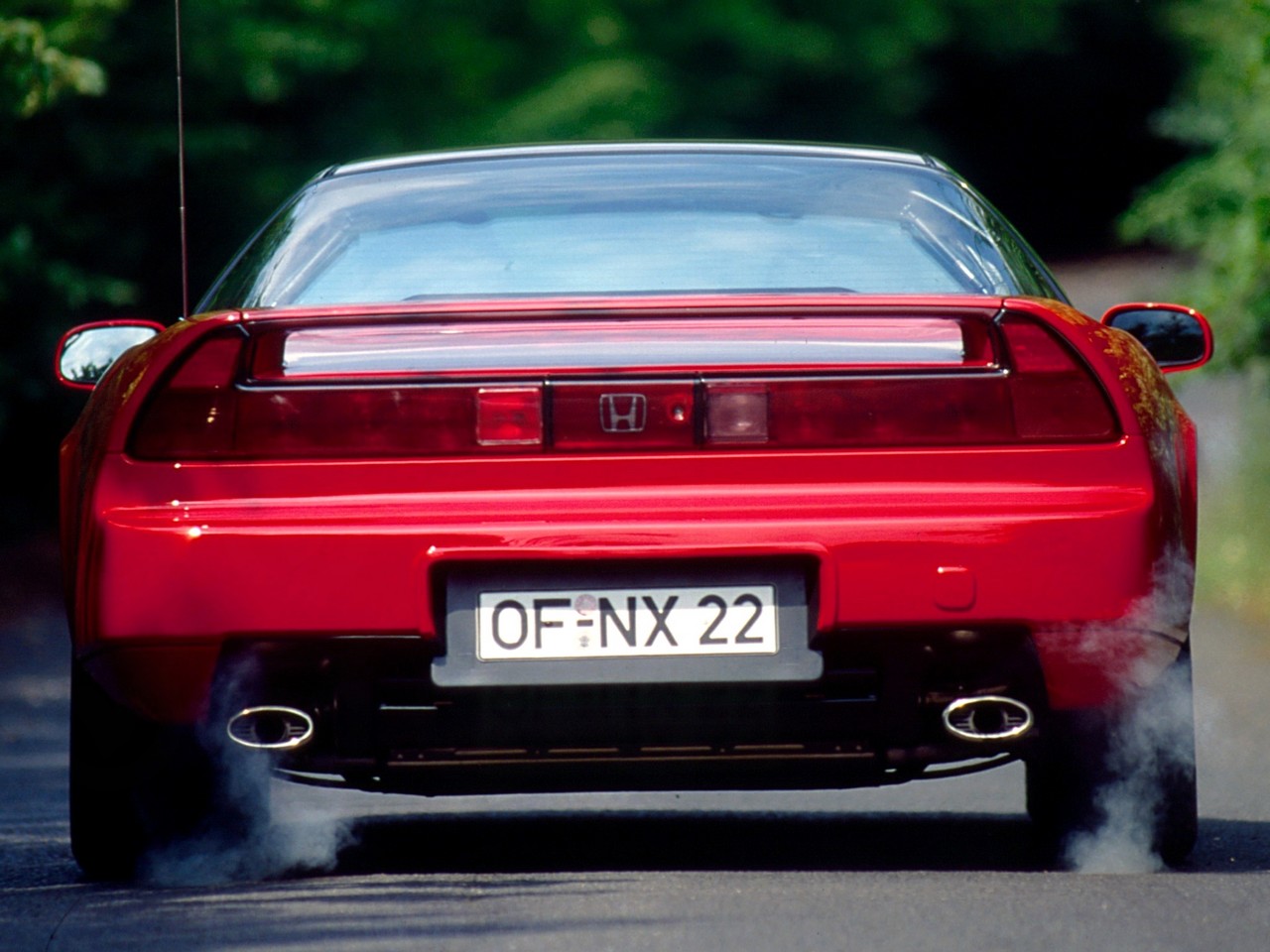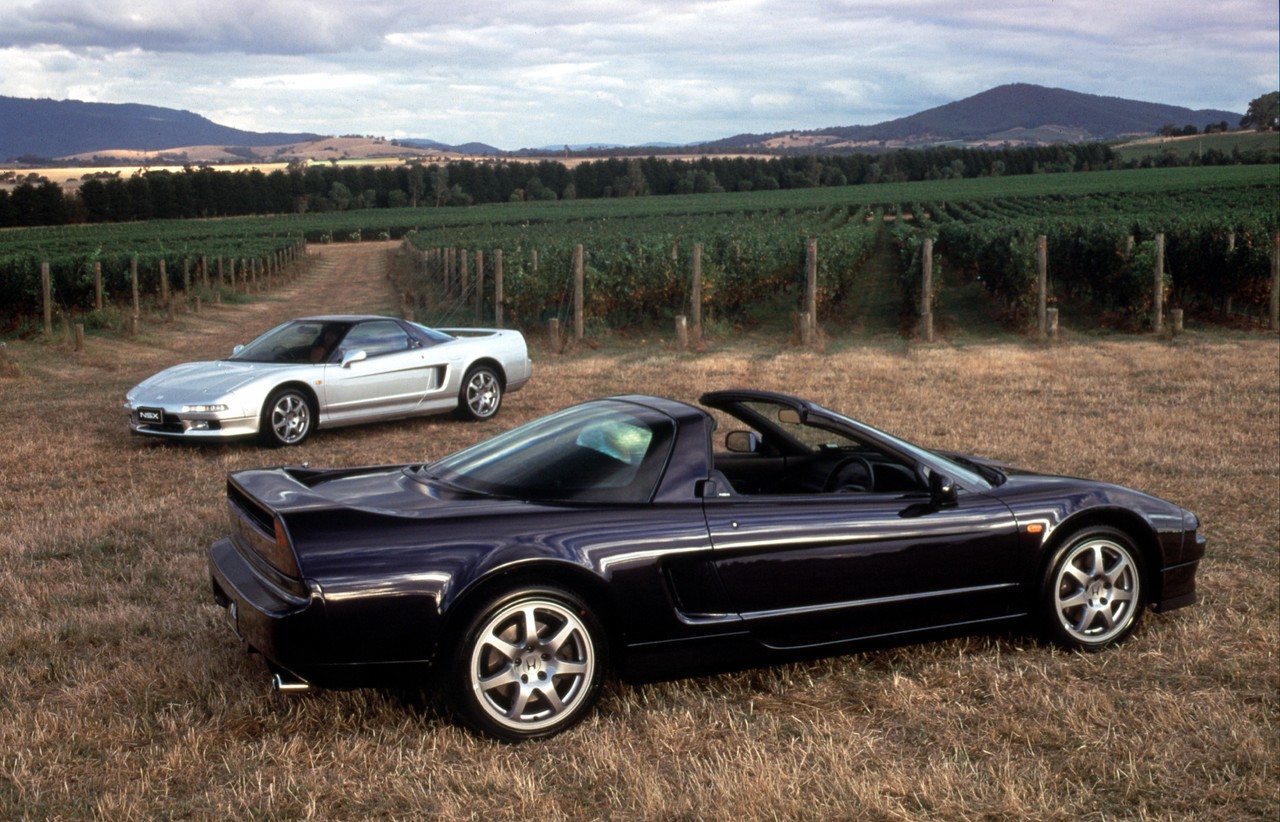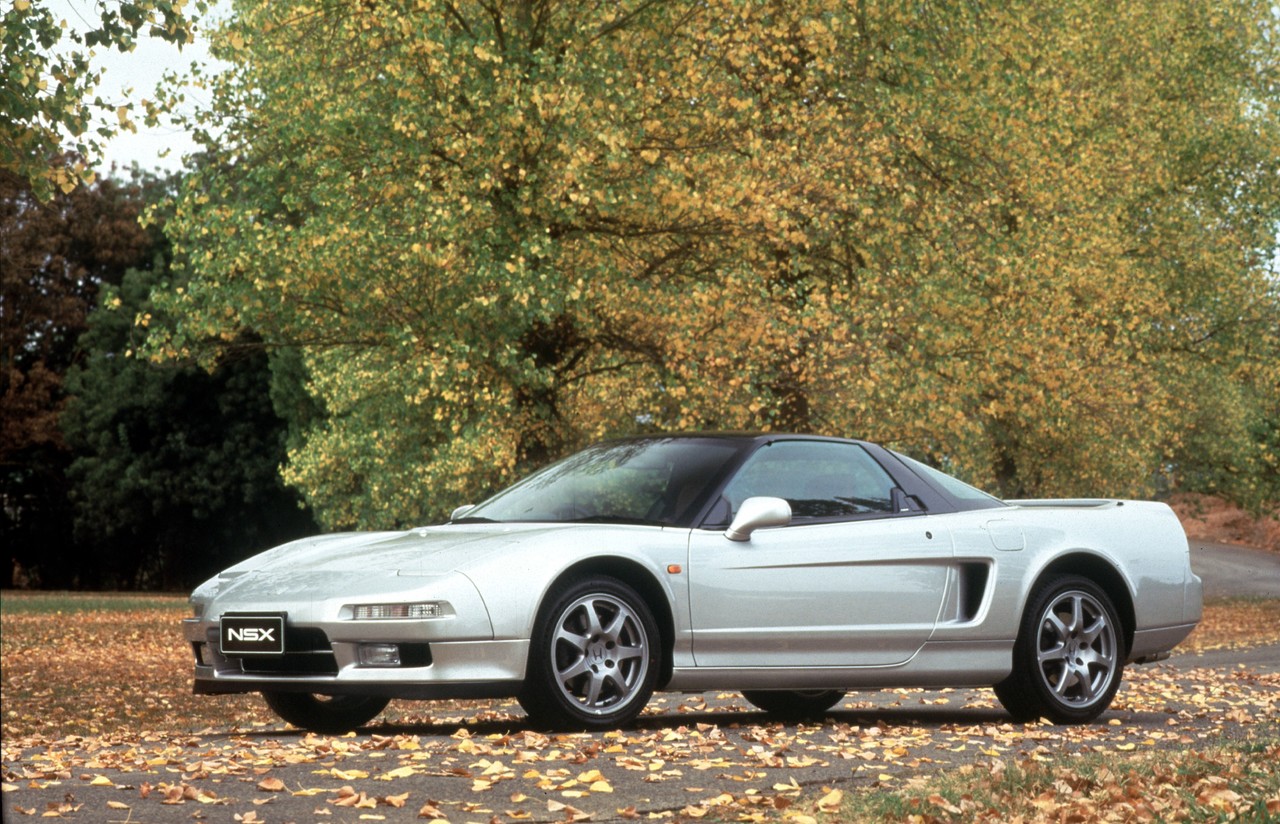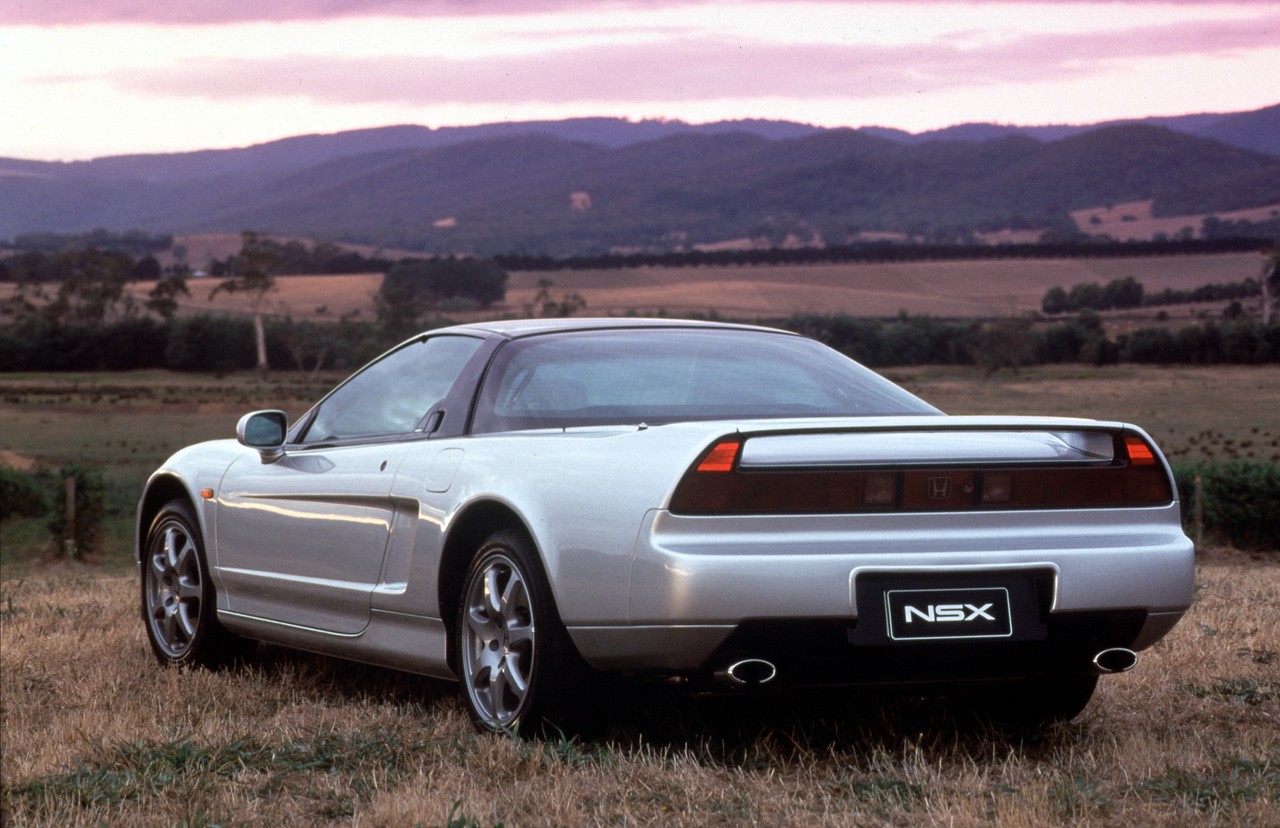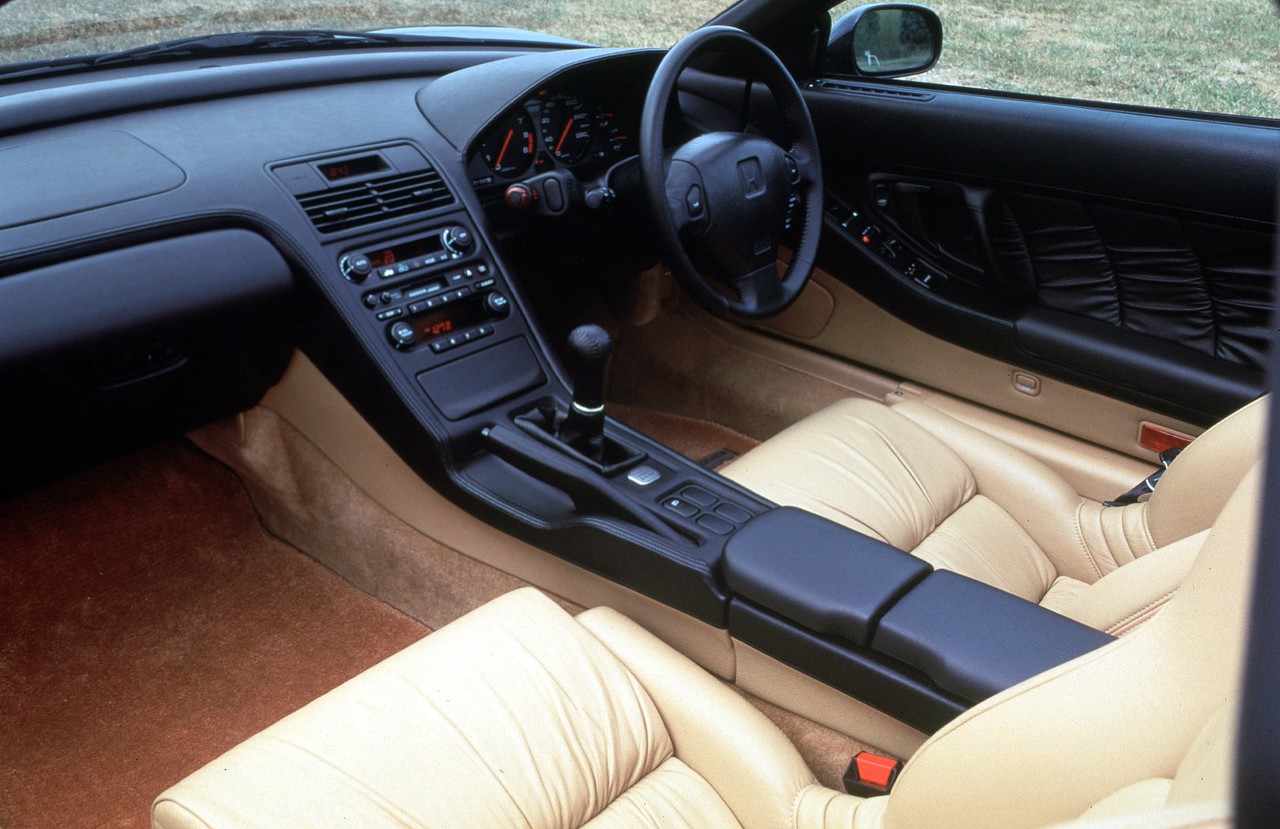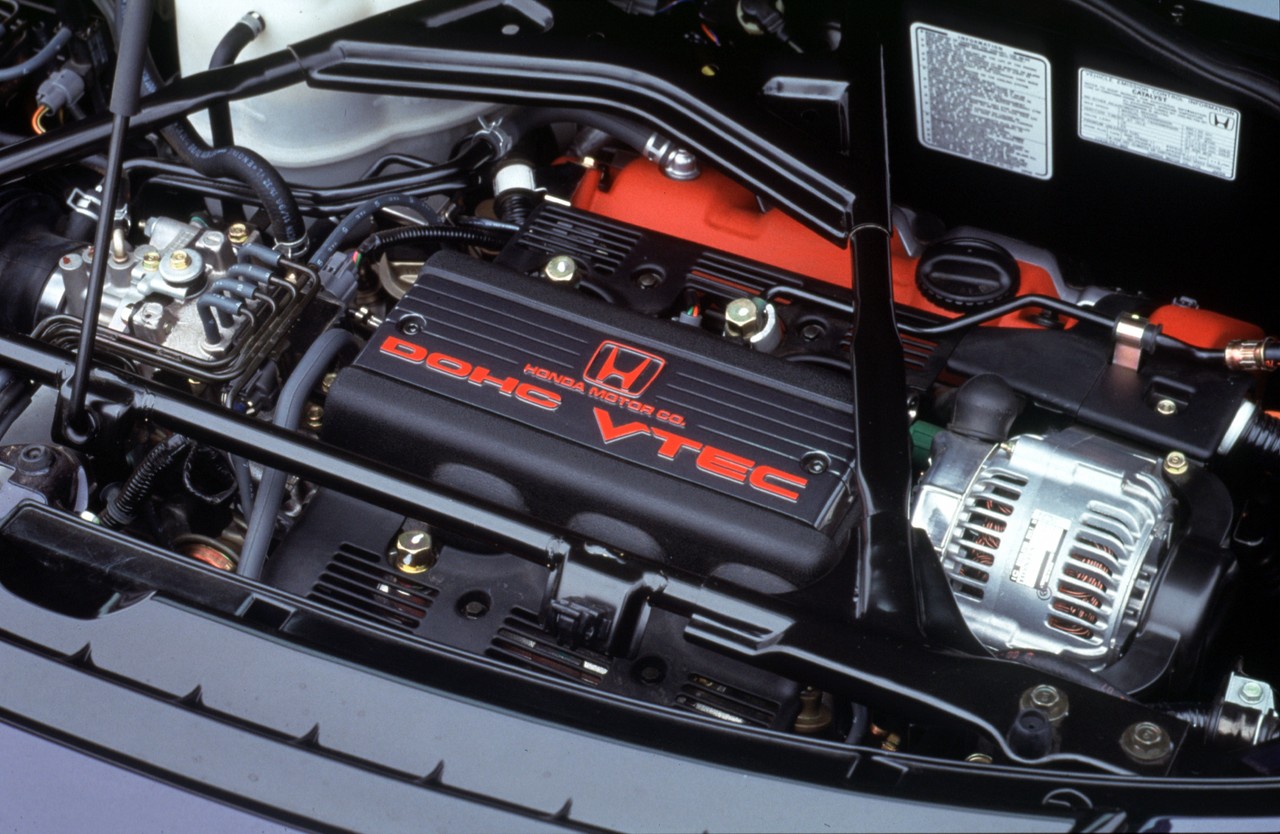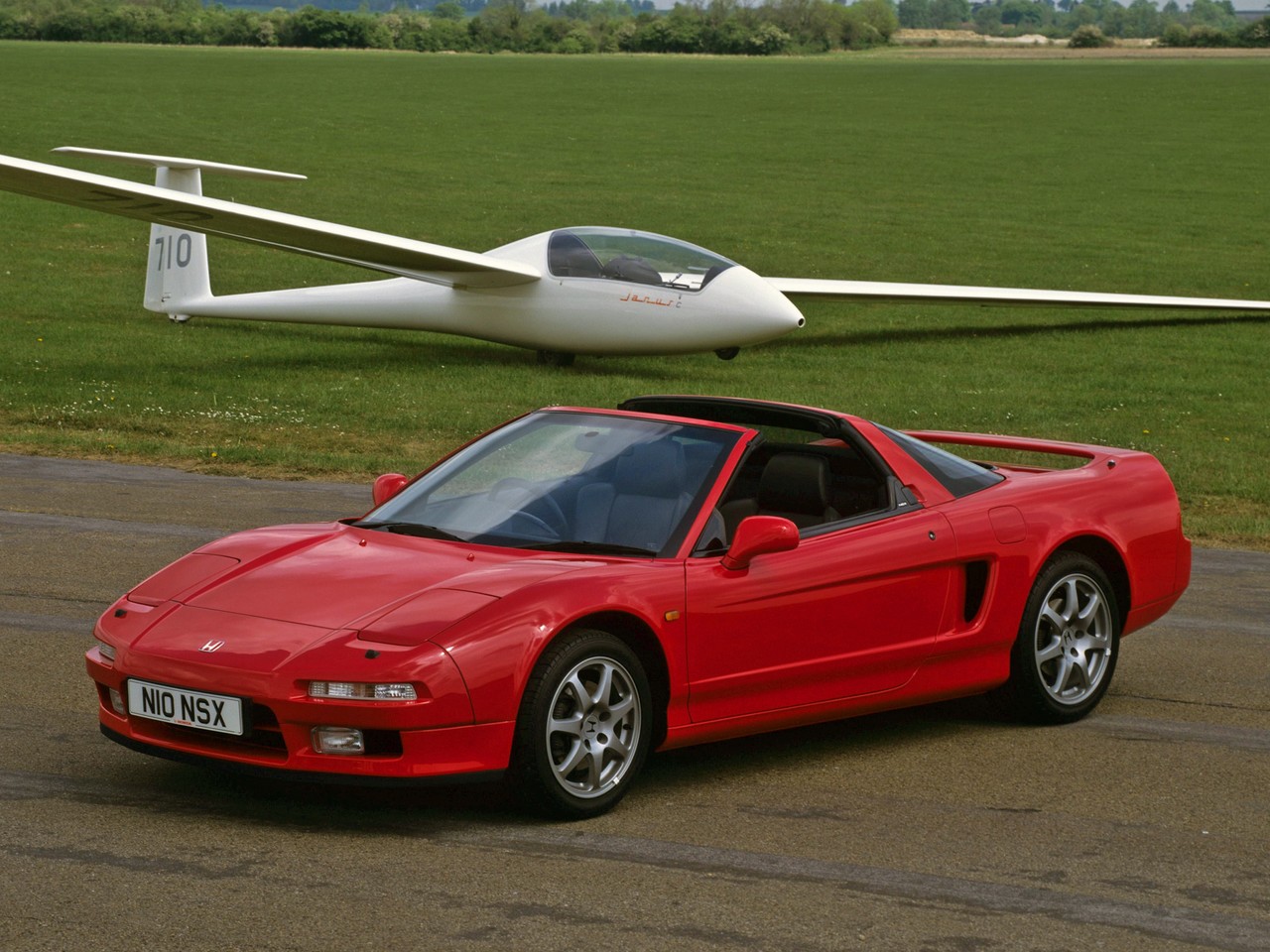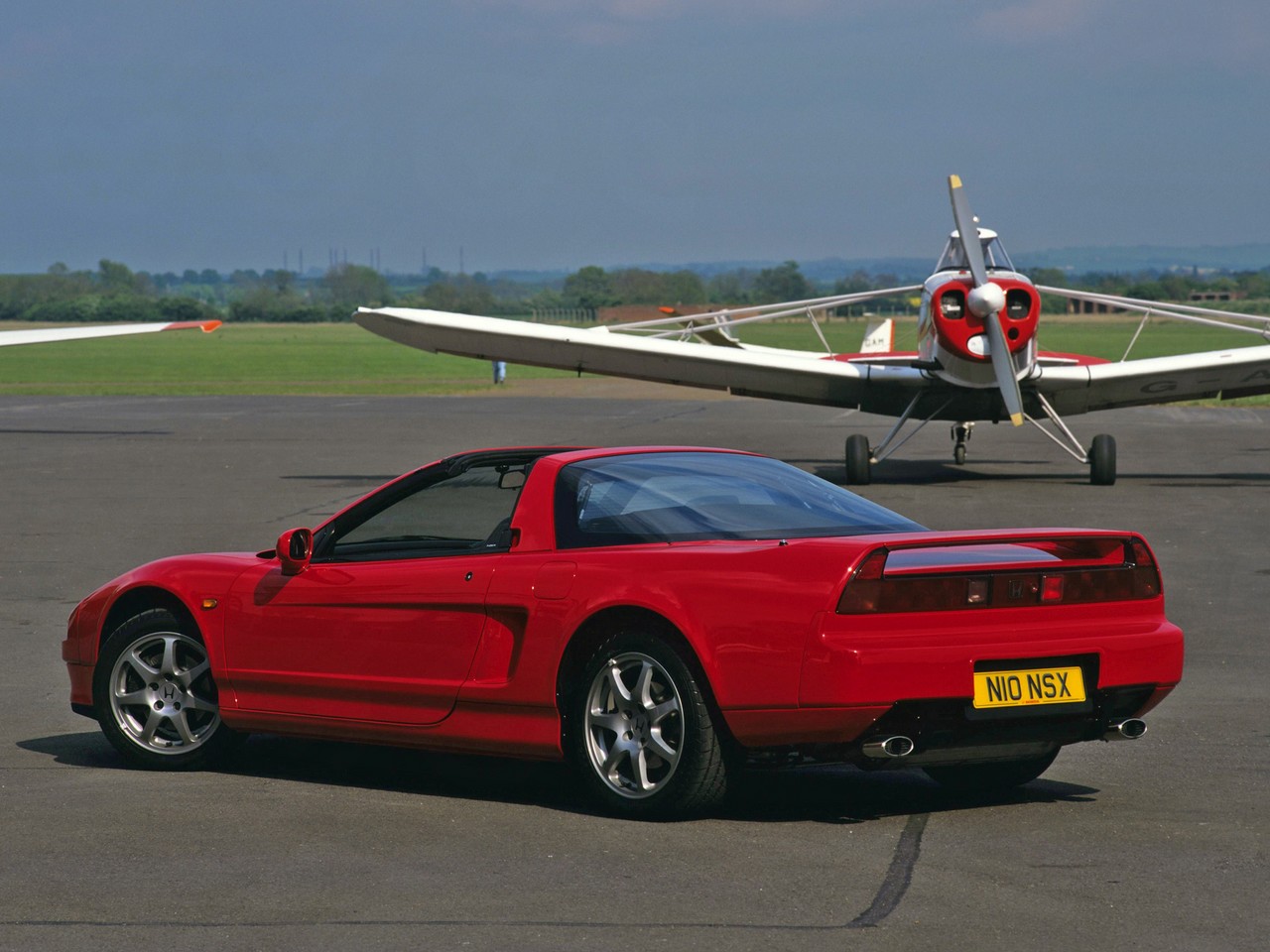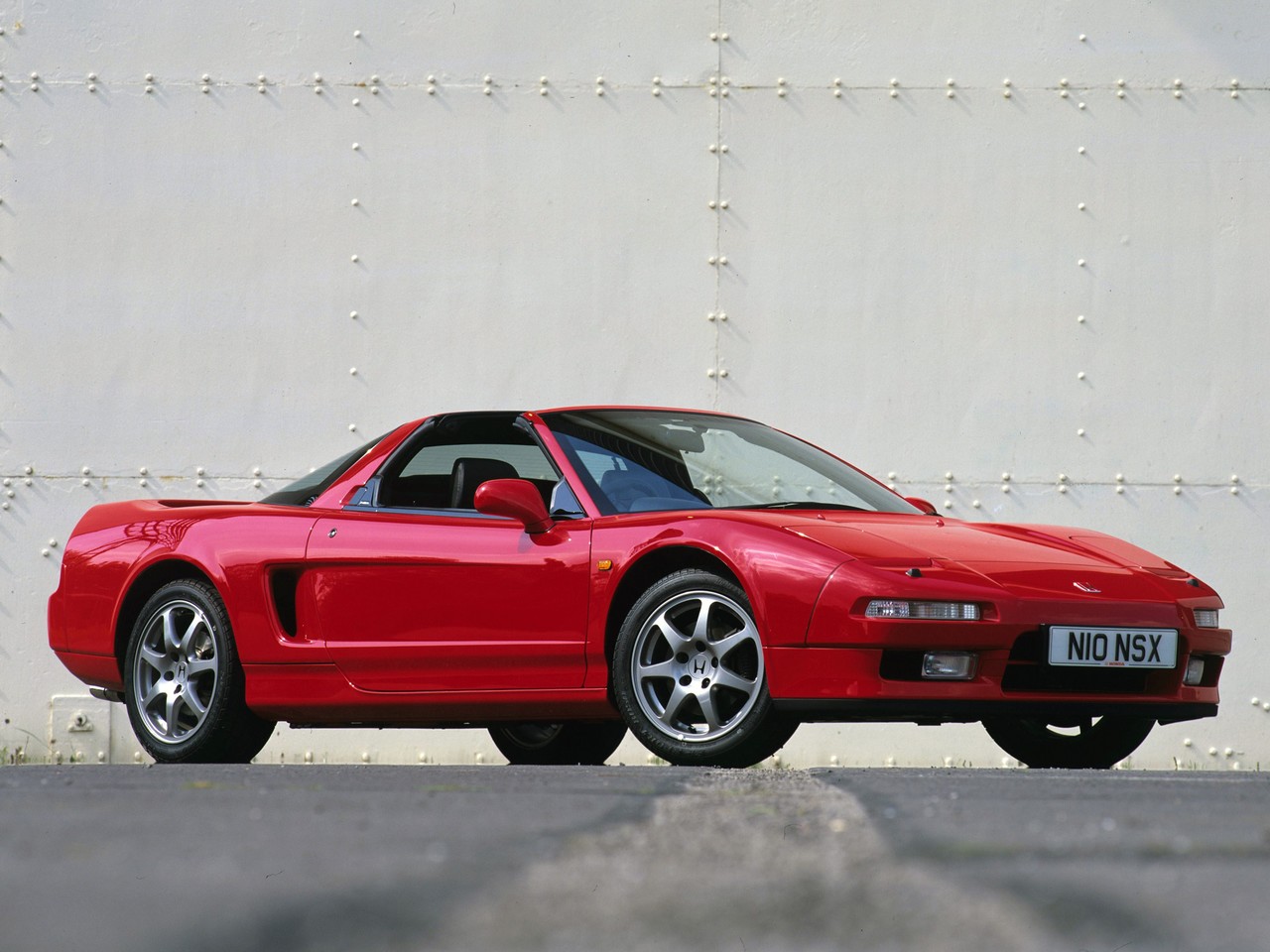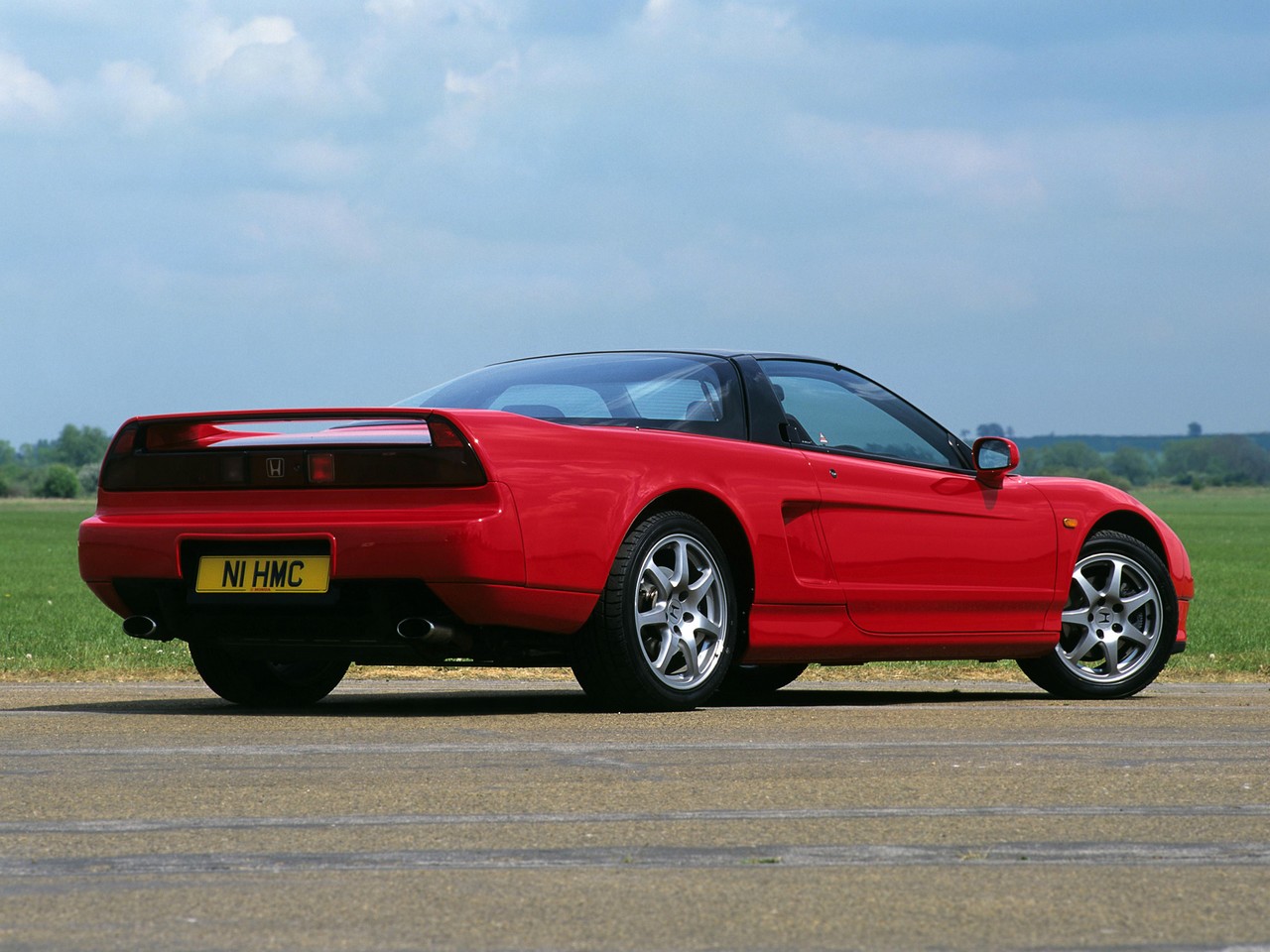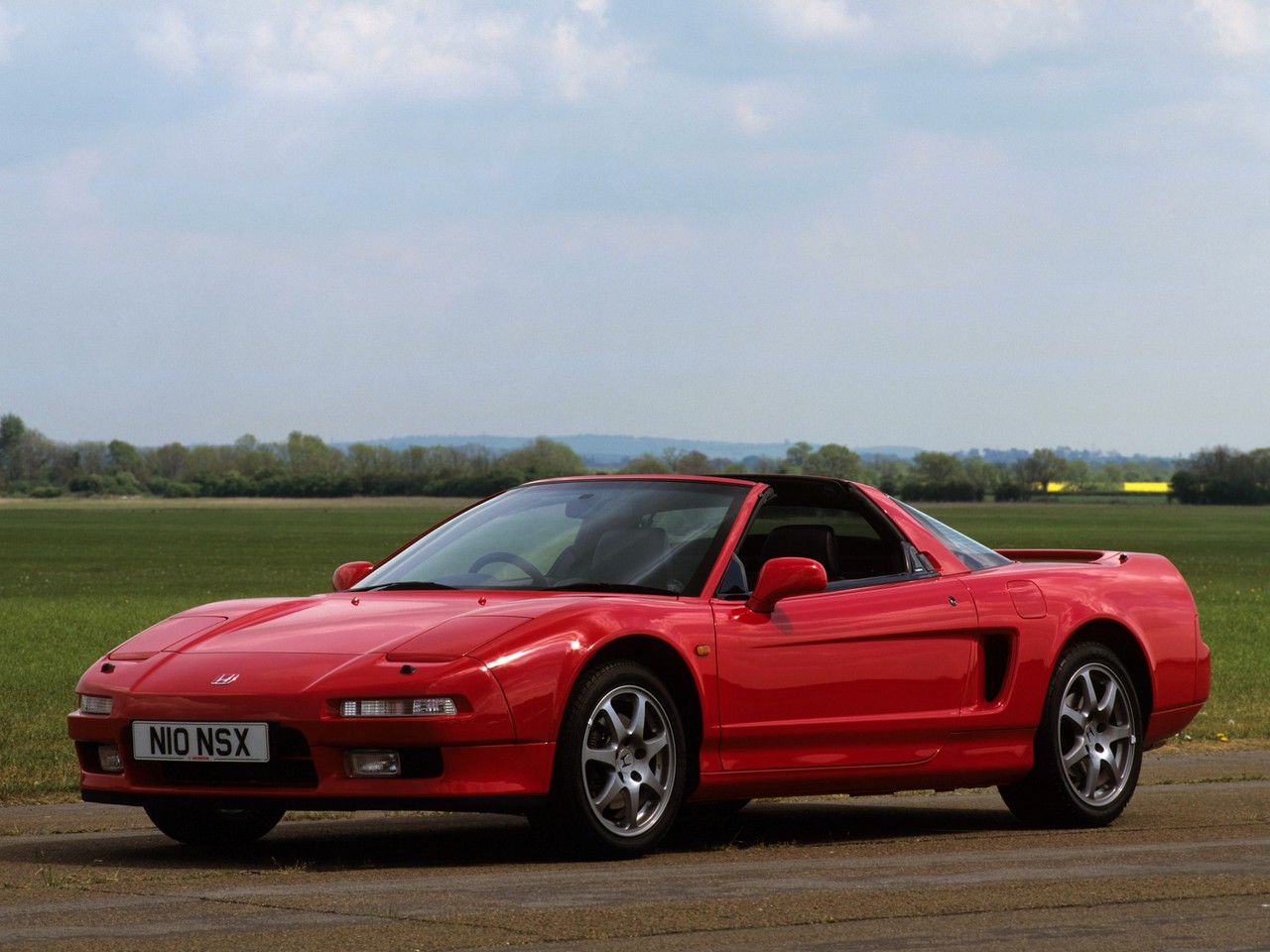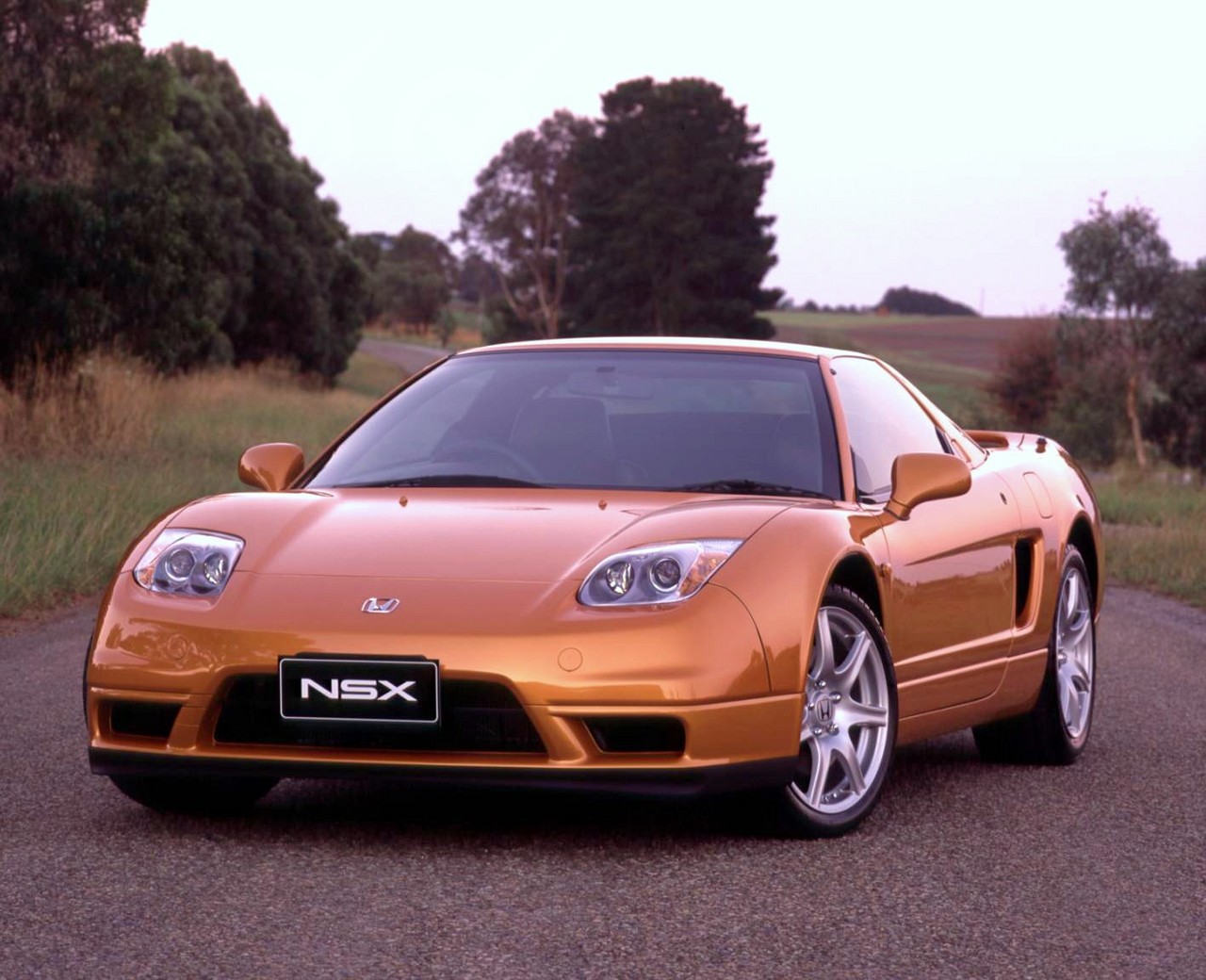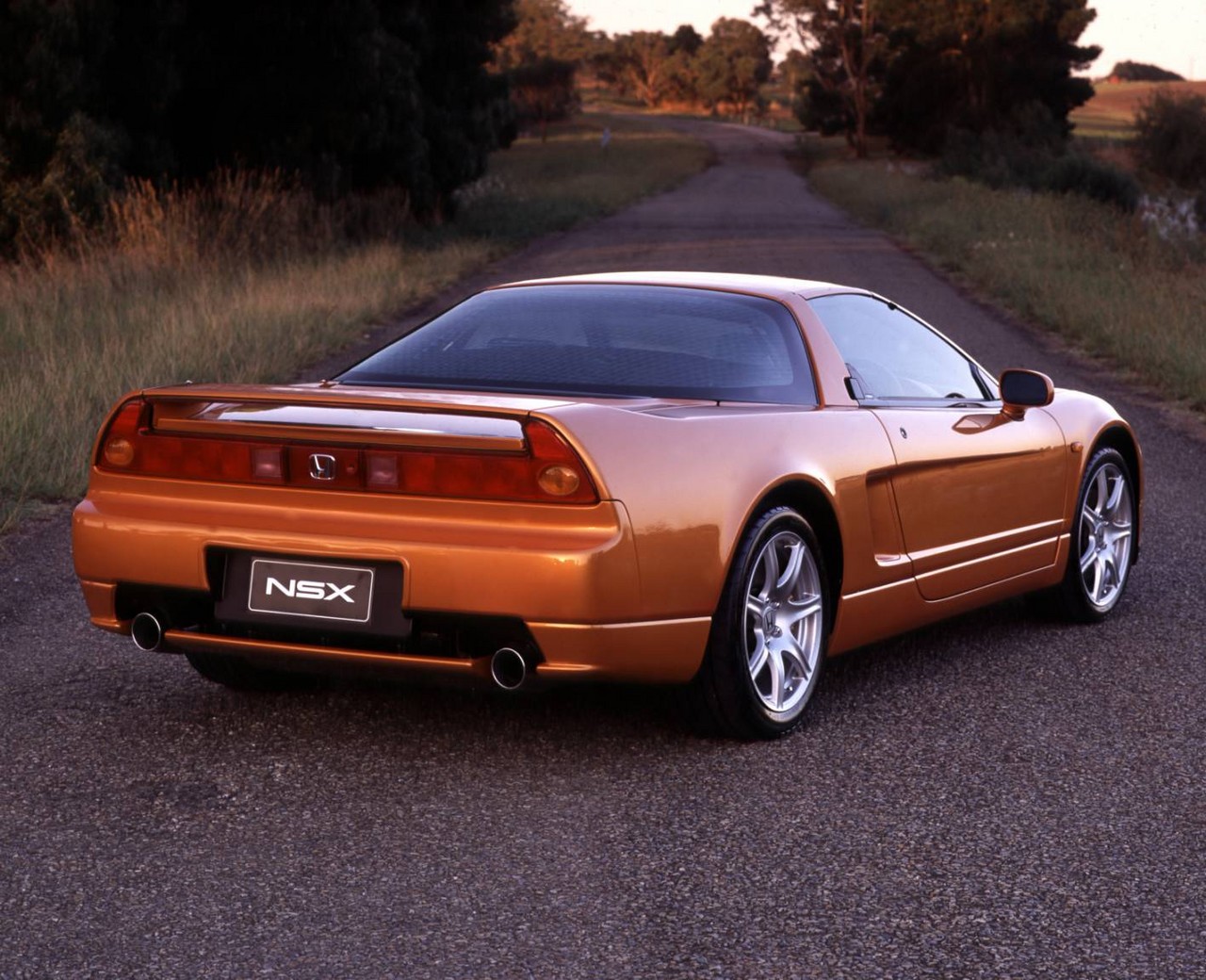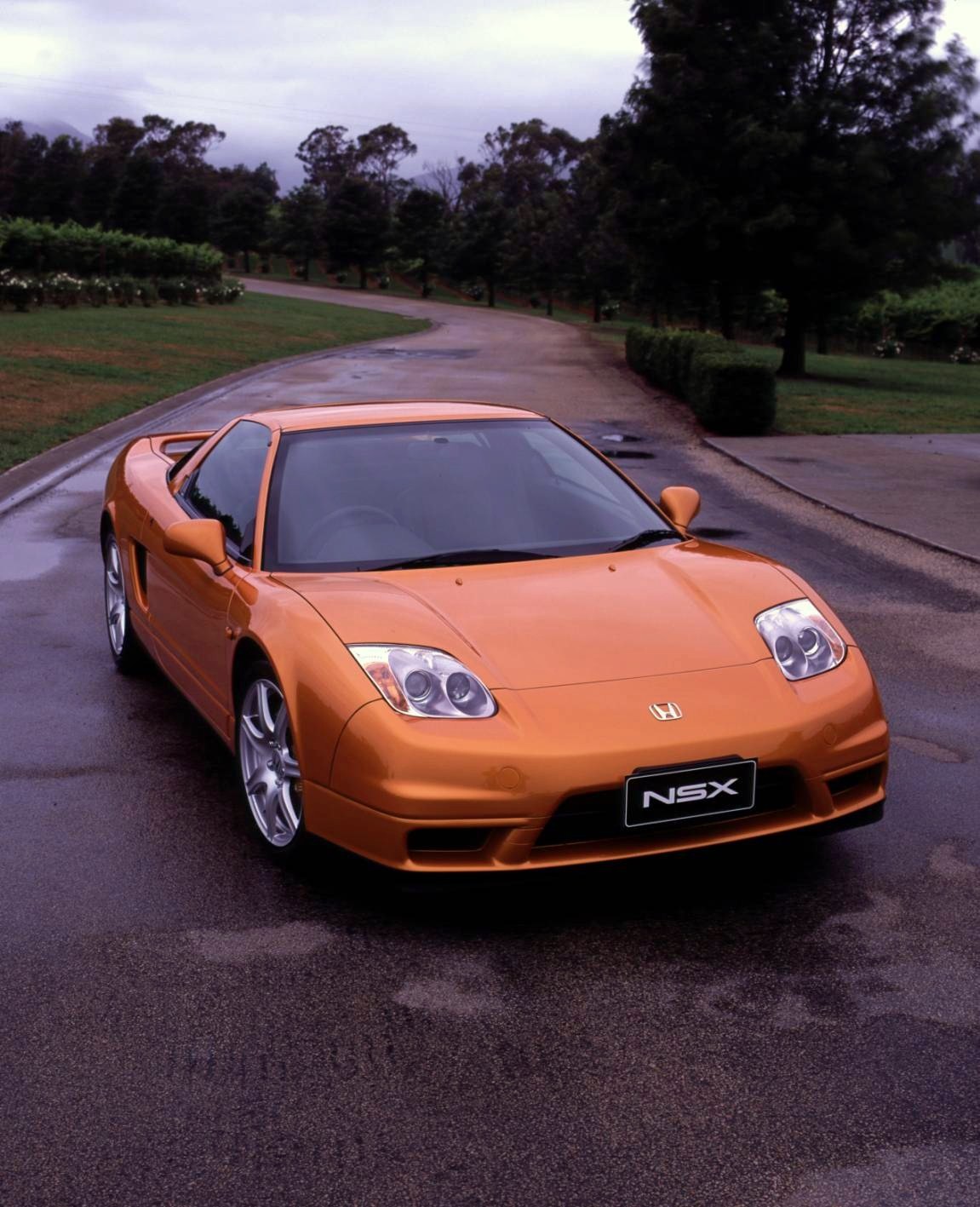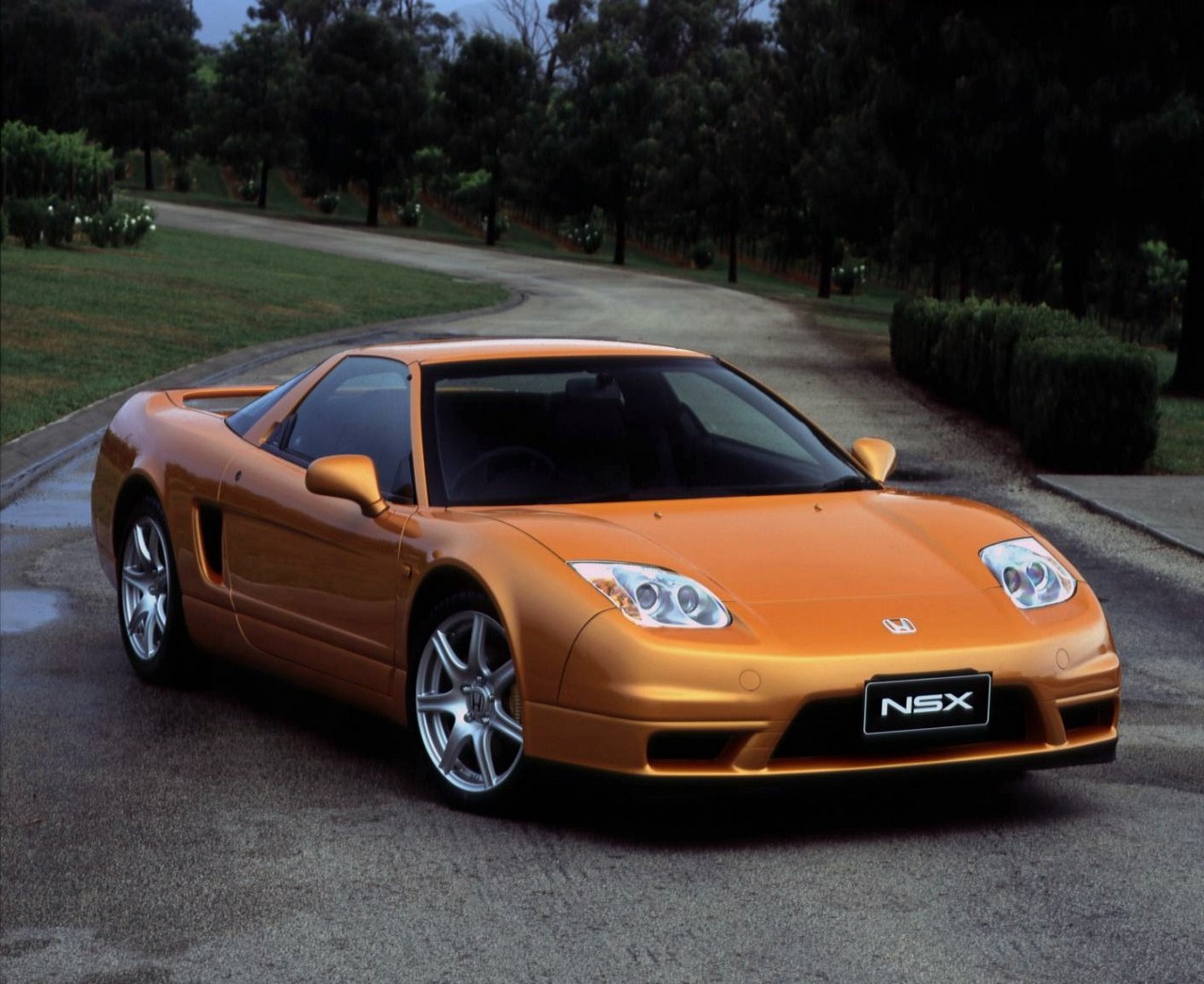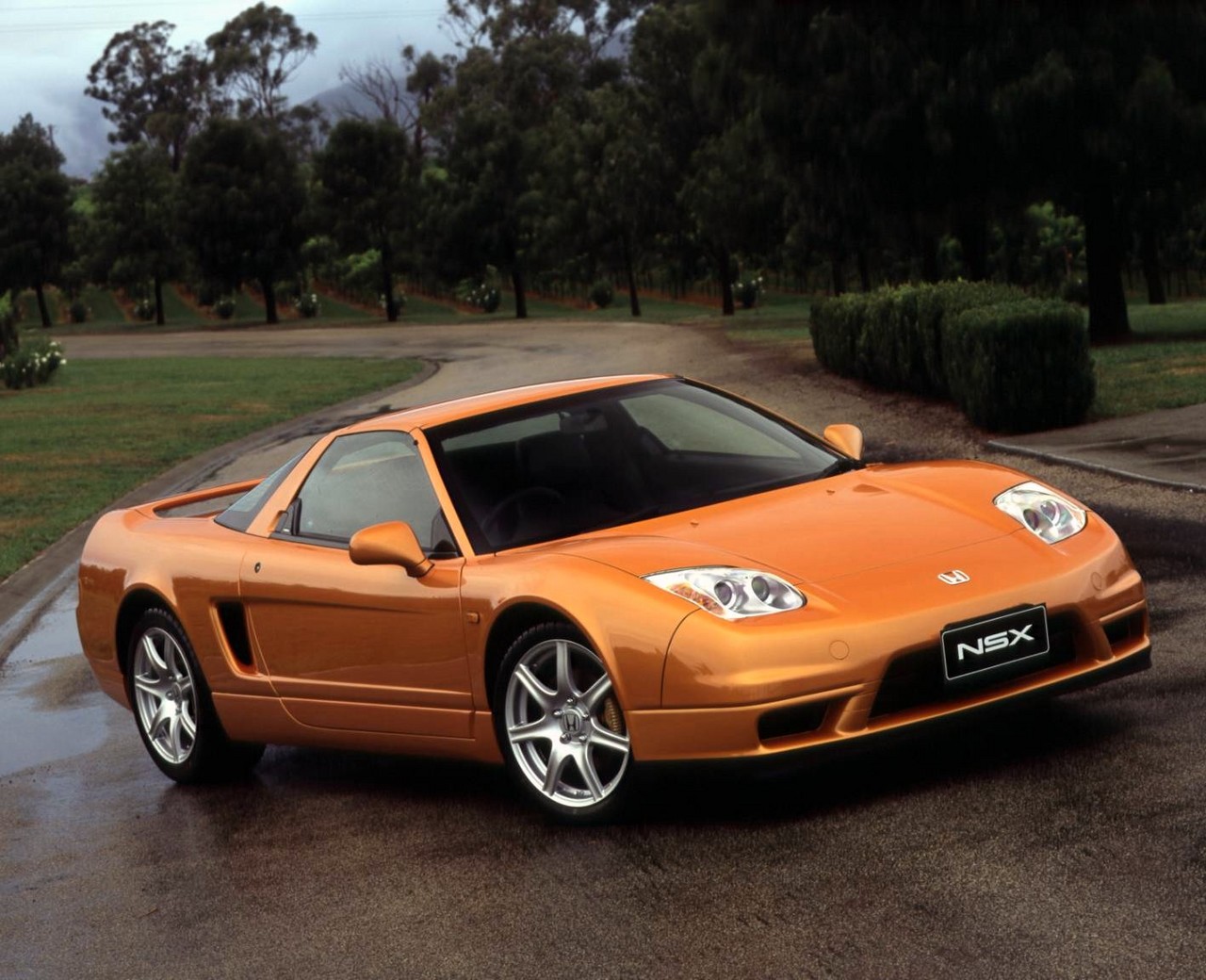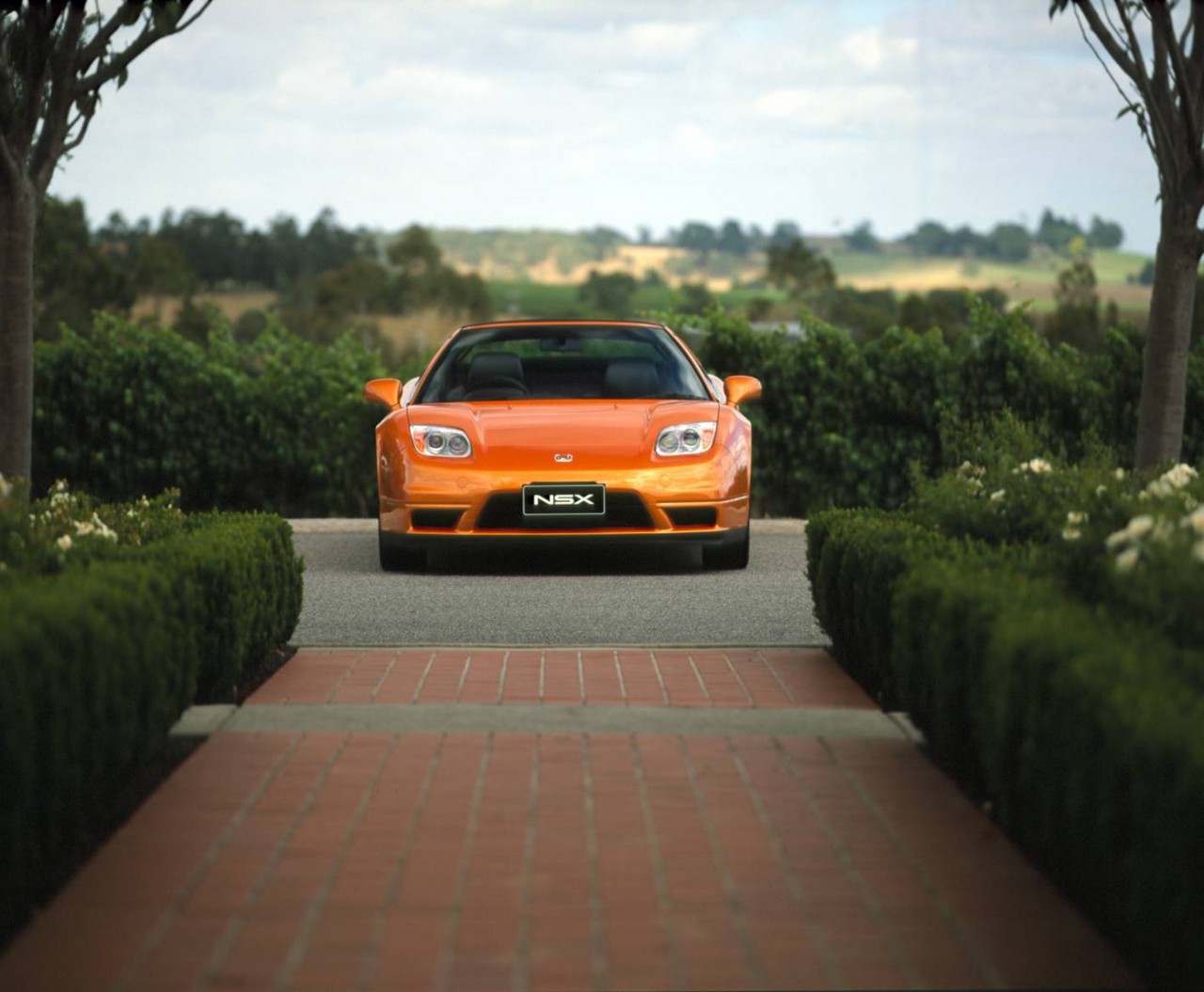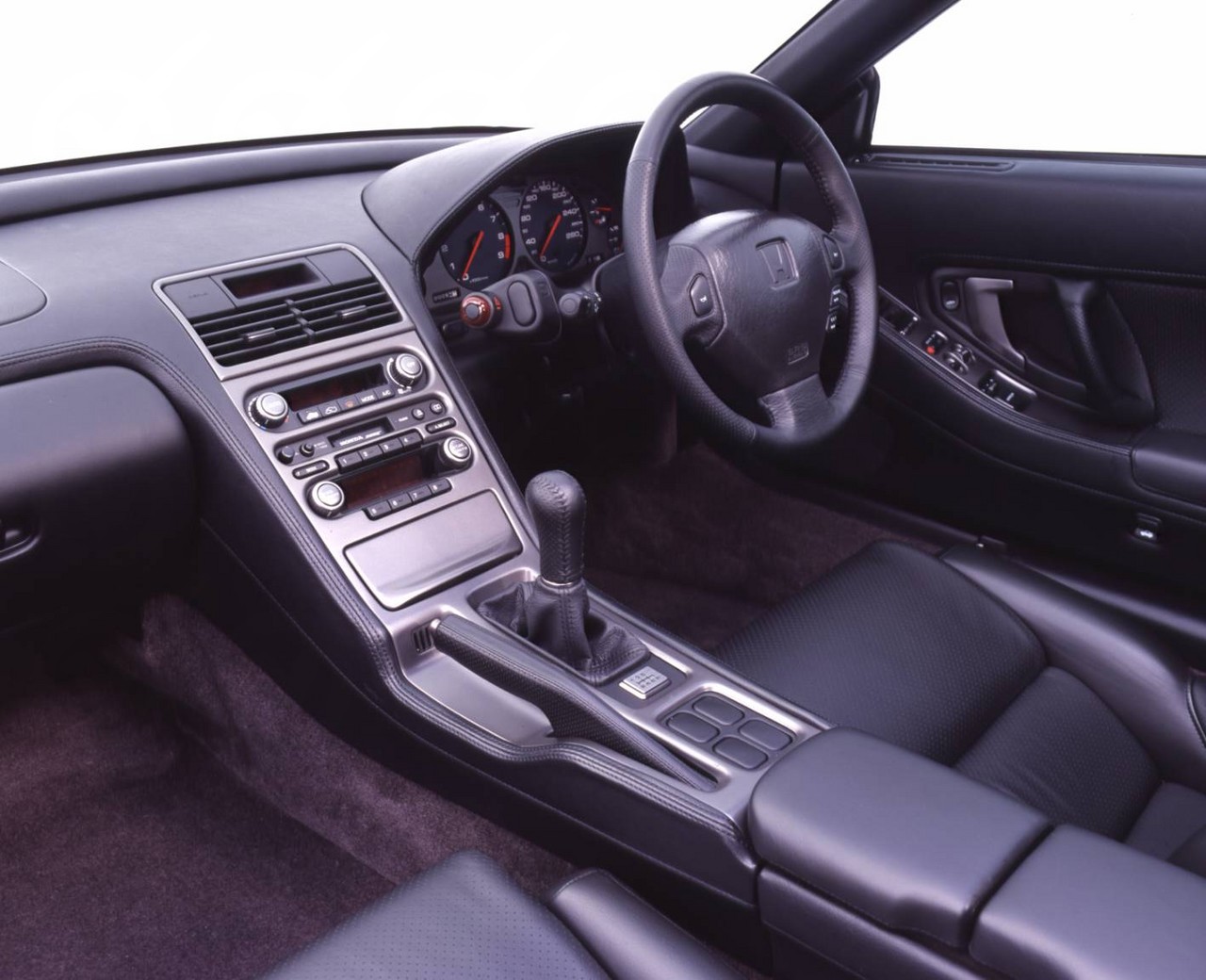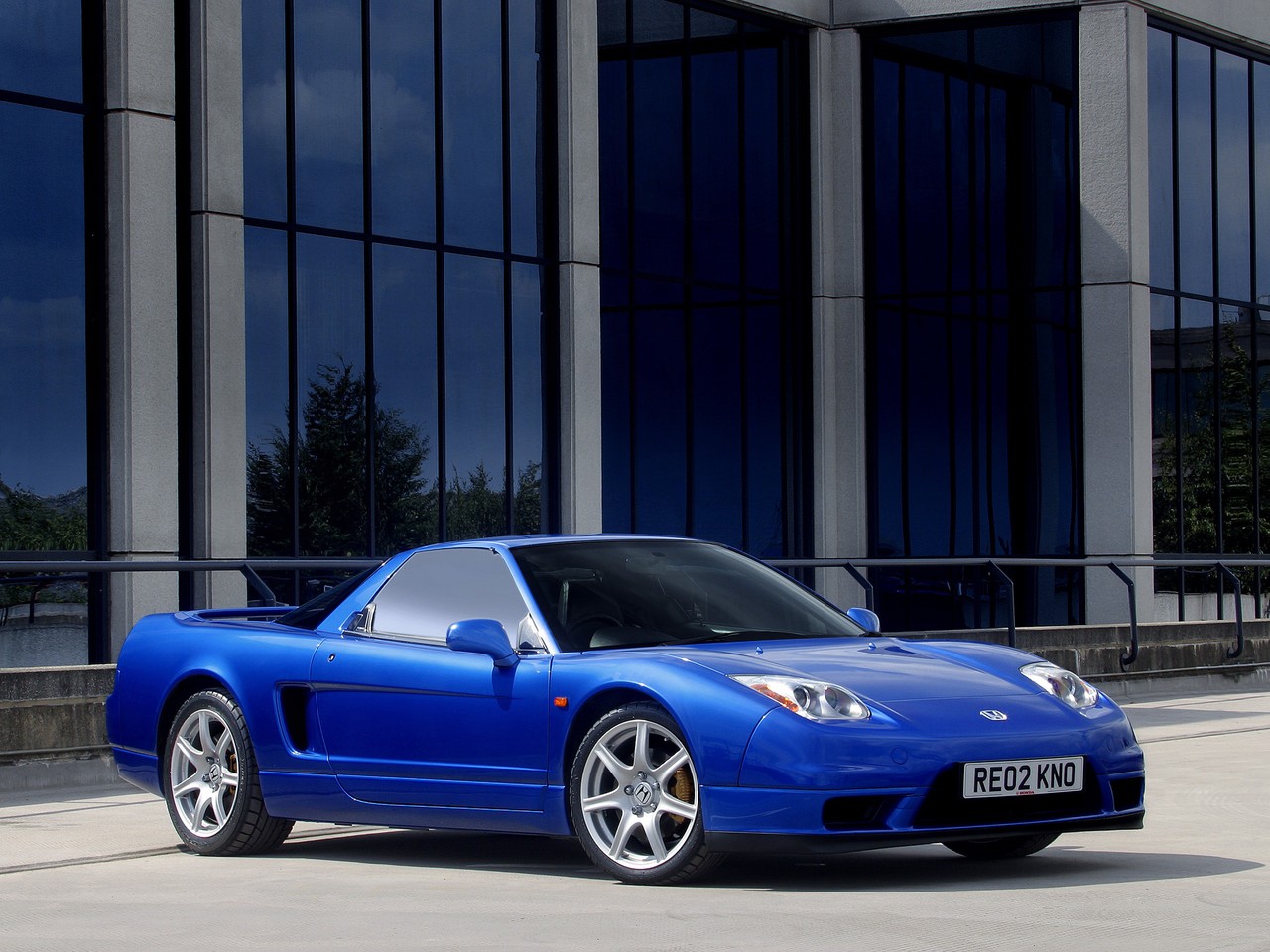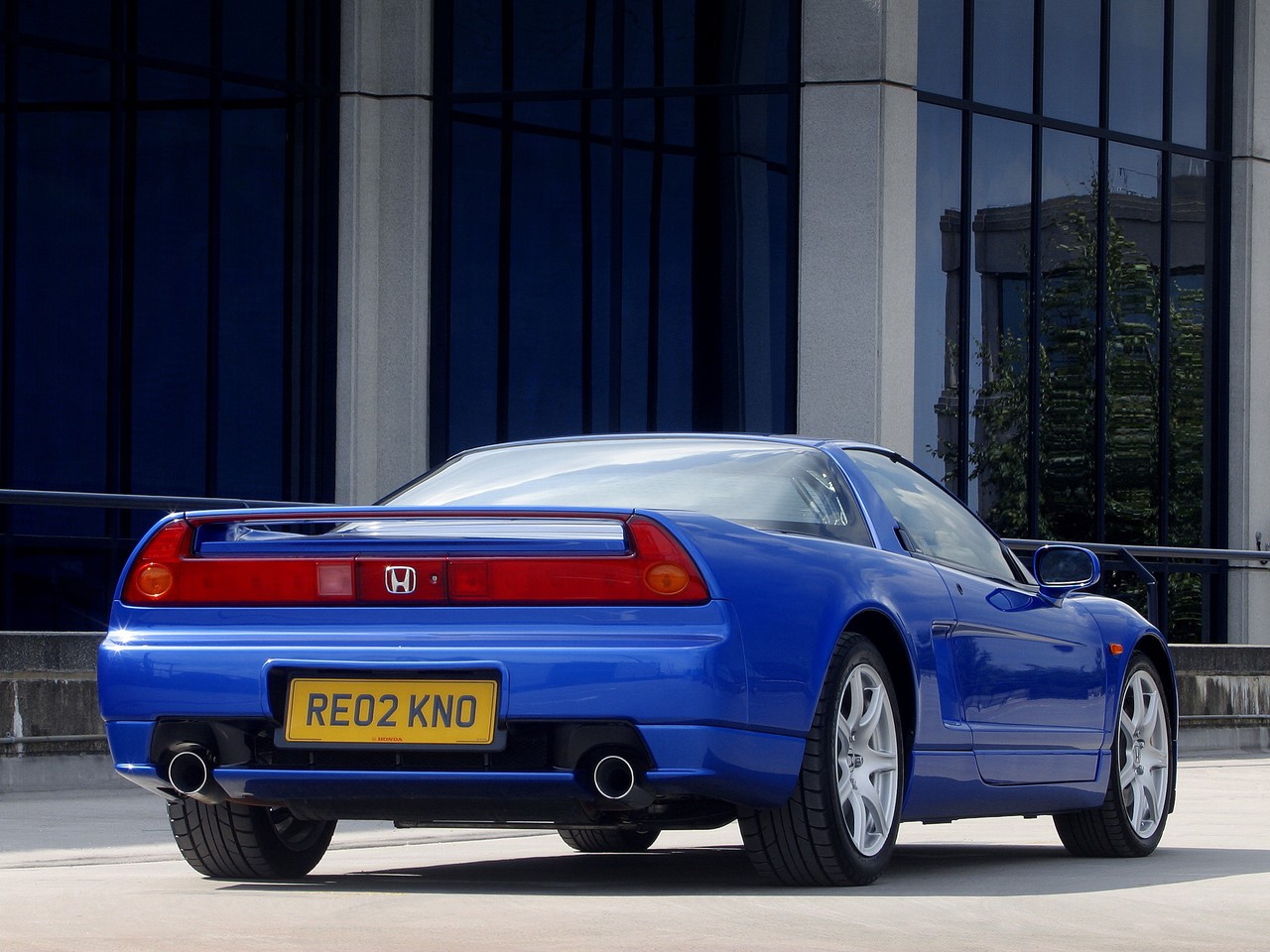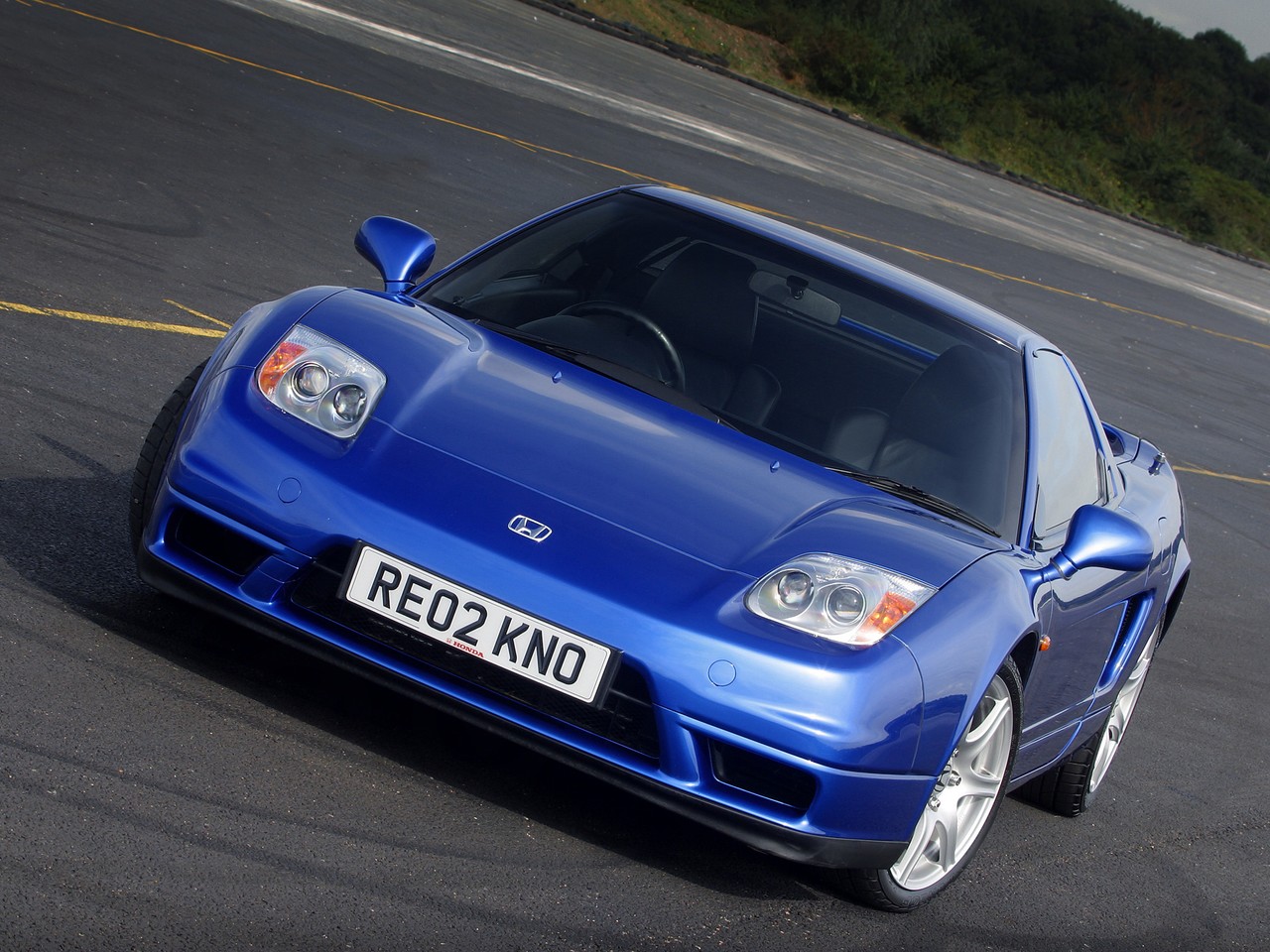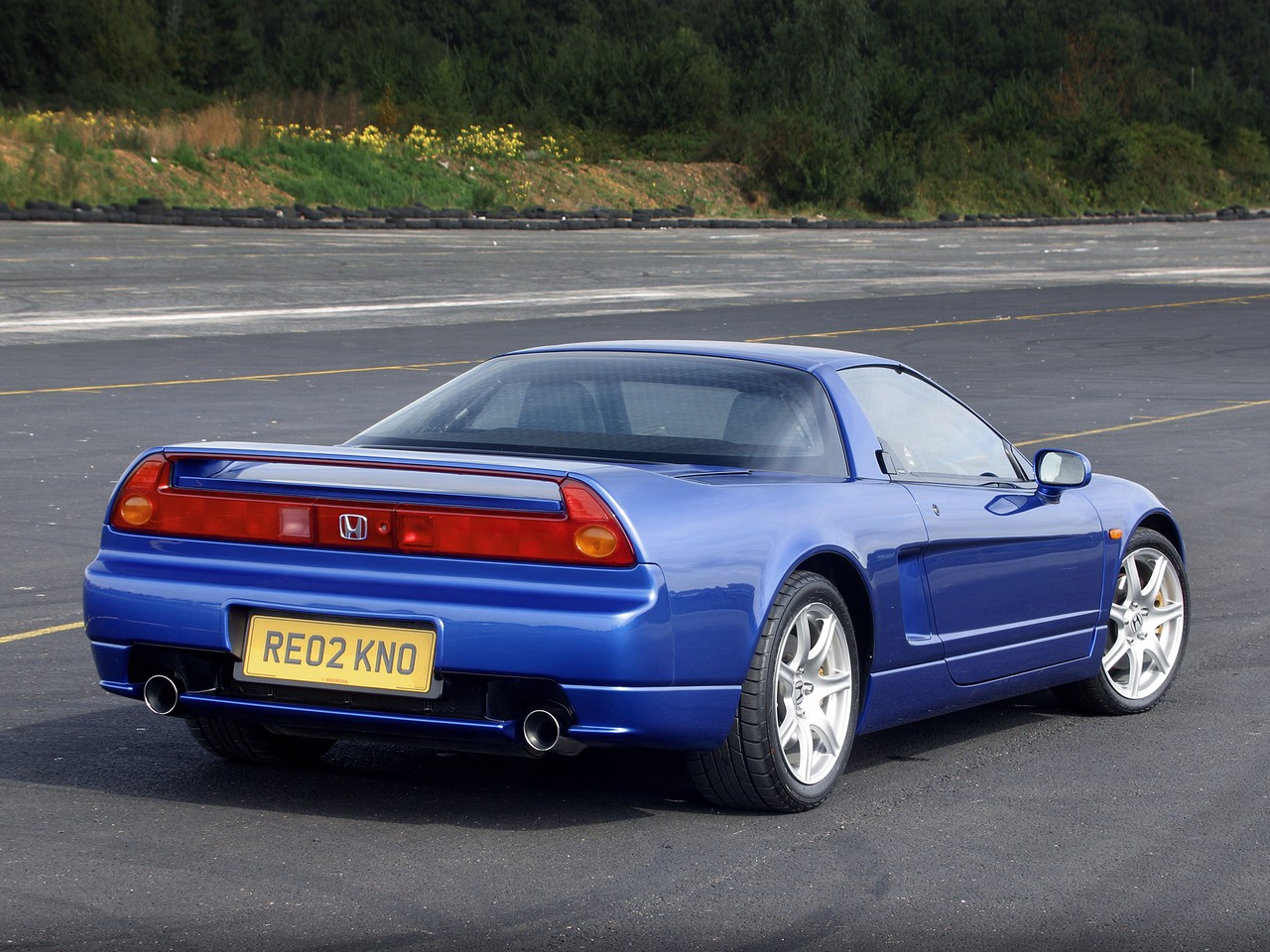
- Free-revving six-cylinder engines
- Excellent dynamics
- Refined six-speed manual transmission
- Slow steering ratio
- Poor rear visibility
- Large turning circle
Honda NA1 NSX (1991-97)
Overview
Released in Australia in 1991, the Honda NA1 NSX was initially available as a mid-engined coupe. Manufactured in a purpose-built factory in Tochigi, Japan, the rear-wheel drive NSX was powered by a 3.0-litre V6 petrol engine that was mated to either a five-speed manual or four-speed automatic transmission.
C30A V6 engine and transmission
The 3.0-litre C30A V6 petrol engine had an open-deck design, an aluminium block and cylinder head, double overhead camshafts (per cylinder bank), titanium connecting rods for reliable high- rpm operation (a world first), forged pistons with molybdenum coating, four valves per cylinder, direct ignition (individual coils mounted atop each spark plug) and a compression ratio of 10.2:1. The C30A engine also featured Honda’s
- Variable Valve Timing and Lift Electronic Control (VTEC) which was designed to engage between 5800 and 6000 rpm; and,
- Variable Volume Induction System (VVIS) which used a secondary intake plenum to create an inertia ram tuning effect from 4800 rpm.
While engines with manual transmissions had an 8000 rpm redline; engines with automatic transmissions, however, had less aggressive cam timing and the redline was reduced to 7200 rpm.
The five-speed manual transmission had a twin-disc clutch, double-cone synchroniser in second gear and a synchronised reverse gear. The four-speed automatic transmission, however, had a lock-up torque converter for improved economy in third and fourth gears which operated in four increments for smooth operation.
Body and development
Significantly, the NSX was the first production car to have an all-aluminium monocoque chassis and suspension, with the former including an extruded aluminium alloy frame. The use of aluminium in the body was estimated to provide a 200 kg mass saving relative to steel, with the aluminium suspension components saving a further 20 kg.
For the NSX, development assistance was provided by Bobby Rahal, Satoru Nakajima and Ayrton Senna, the latter attributed with convincing Honda to stiffen the chassis after testing a prototype vehicle at Honda’s Suzuka racetrack. Furthermore, Honda used a Cray supercomputer to performance finite element modelling to achieve a design with the desired structural rigidity.
Dimensions
With its long-tail, cabin forward design, the NSX coupe was 4430 mm long, 1810 mm wide, 1175 mm tall and had a 2530 mm long wheelbase; kerb weight was 1365 kg for models with manual transmissions (with a 42:58 front:rear distribution) and 1405 kg for models with automatics.
Suspension
The NSX had independent, double wishbone suspension front and rear with forged control arms, coil springs, telescopic shock absorbers and anti-roll bars; the NSX was also fitted with a limited slip differential which had a multi-plate clutch and planetary gearset. In crosswinds, the differential would operate to detect the rotational difference between the rear wheels and transfer torque to the slower wheel to keep the vehicle on its desired path.
Steering
The NSX had a variable ratio rack-and-pinion steering system. Initially, only models with automatic transmissions had power-assistance and this was disabled at speeds above 50 km/h for greater steering feel. From 1993, however, models with manual transmissions also had power-assisted steering.
NSX Targa
In May 1995, the NSX Targa (also known as the NSX-T) was released. Compared to the coupe, the NSX Targa had a 45 kg heavier body due to structural reinforcements, though rigidity was still less than the coupe. Furthermore, suspension changes for the NSX Targa included smaller-diameter front sway bars, stiffer front spring rates and softer dampers.
| Body | Years | Engine | Trans. | Peak power | Peak torque |
|---|---|---|---|---|---|
| Coupe | 1991-97 | 3.0-litre petrol V6 (C30A) | 5sp man. | 201 kW at 7100 rpm | 284 Nm at 5300 rpm |
| 4sp auto | 188 kW at 6800 rpm | 284 Nm at 5300 rpm | |||
| Targa | 1995-97 | 3.0-litre petrol V6 (C30A) | 5sp auto | 201 kW at 7100 rpm | 284 Nm at 5300 rpm |
| 4sp auto | 188 kW at 6800 rpm | 284 Nm at 5300 rpm |
Safety equipment
Standard safety equipment for the NSX included a driver’s airbag, ABS (four-channel) and traction control. From 1993, the NSX was also fitted with a front passenger airbag and front seatbelt pretensioners.
Brakes
The NSX had 282 mm ventilated brake discs front and rear with dual-piston steel calipers.
Features
Standard features for the NSX included forged alloy wheels with 205/50 ZR15 front and 225/50 ZR16 rear Yokohama tyres, a four speaker Bose sound system with a six-disc Alpine CD changer, climate control air conditioning, power adjustable front seats, leather trim, cruise control, central locking, power windows, power mirrors and a height and reach adjustable steering column.
From 1994, the NSX was fitted with 215/45 ZR16 front and 245/40 ZR17 rear tyres for more responsive handling and increased cornering capability.
From 1995, the NSX had electronic throttle control (also known as drive-by wire), the first Honda vehicle to be so equipped.
Honda NA1 and NA2 NSX (1997-01)
Overview
Released in April 1997, the NA2 NSX was powered by a 3.2-litre V6 petrol engine and solely available with a six-speed manual transmission.
C32B engine
The 3.2-litre C32B engine had the same properties as its 3.0-litre C30A predecessor but thinner fibre-reinforced metal (FRM) cylinder liners were used to increase displacement, though more efficient intake and exhaust systems were also introduced. Furthermore, the newly introduced six-speed manual transmission differed from its five-speed predecessor in that it had a single clutch.
| Body | Years | Engine | Trans. | Peak power | Peak torque |
|---|---|---|---|---|---|
| Coupe, Targa |
1997-01 | 3.2-litre petrol V6 (C32B) | 6sp man. | 206 kW at 7300 rpm | 298 Nm at 5300 rpm |
| 3.0-litre petrol V6 (C30A) | 4sp auto | 188 kW at 6800 rpm | 284 Nm at 5300 rpm |
Brakes
While standard safety equipment was unchanged, the post-April 1997 NA1 and NA2 NSX were fitted with 298 mm front and 303 mm rear ventilated brake discs with dual-piston steel calipers.
Features
Compared to their predecessors, the security system was upgraded and included an immobiliser.
Honda NA1 and NA2 NSX (2002-04)
Overview
An updated NSX was released in Australia in February 2002, introducing cosmetic updates and suspension changes. Visually, the post-February 2002 NSX could be identified by its lighter, fixed headlights with high intensity discharge (HID) xenon bulbs, a restyled front bumper and rear apron, more prominent side sills, new tail-lights and ribbed seven-spoke alloy wheels; the NSX also introduced two new colours: Monte Carlo Blue and Imola Orange. As a result of these changes, the NSX’s drag coefficient was reduced from 0.32 to 0.30 Cd.
Inside, the NSX had new colours for the gauge faces, centre panel, sound system air conditioning unit and door panels.
Suspension changes for the NSX included increased front spring rates and a larger diameter rear stabiliser bar. Furthermore, front tyre size increased from 16 to 17 inches (with 215/40 ZR17 tyres) and rear tyre width increased from 8.5 to 9.0 inches (255/40 ZR17 tyres).
| Body | Years | Engine | Trans. | Peak power | Peak torque |
|---|---|---|---|---|---|
| Coupe, Targa |
2002-04 | 3.2-litre petrol V6 (C32B) | 6sp man. | 206 kW at 7300 rpm | 298 Nm at 5300 rpm |
| 3.0-litre petrol V6 (C30A) | 4sp auto | 188 kW at 6800 rpm | 284 Nm at 5300 rpm |
Features
Standard features for the post-February 2002 NSX were largely unchanged.
Related links
